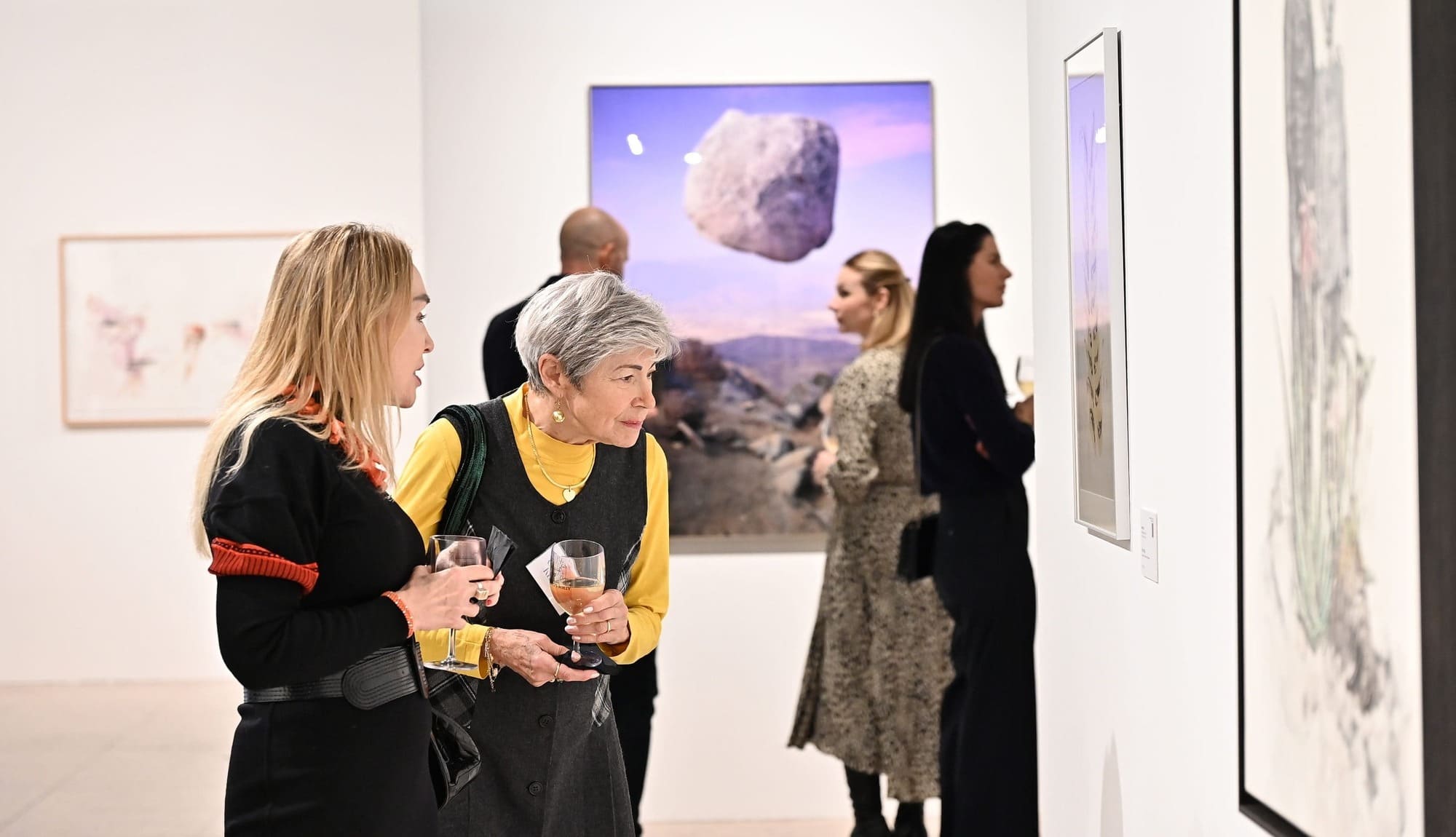

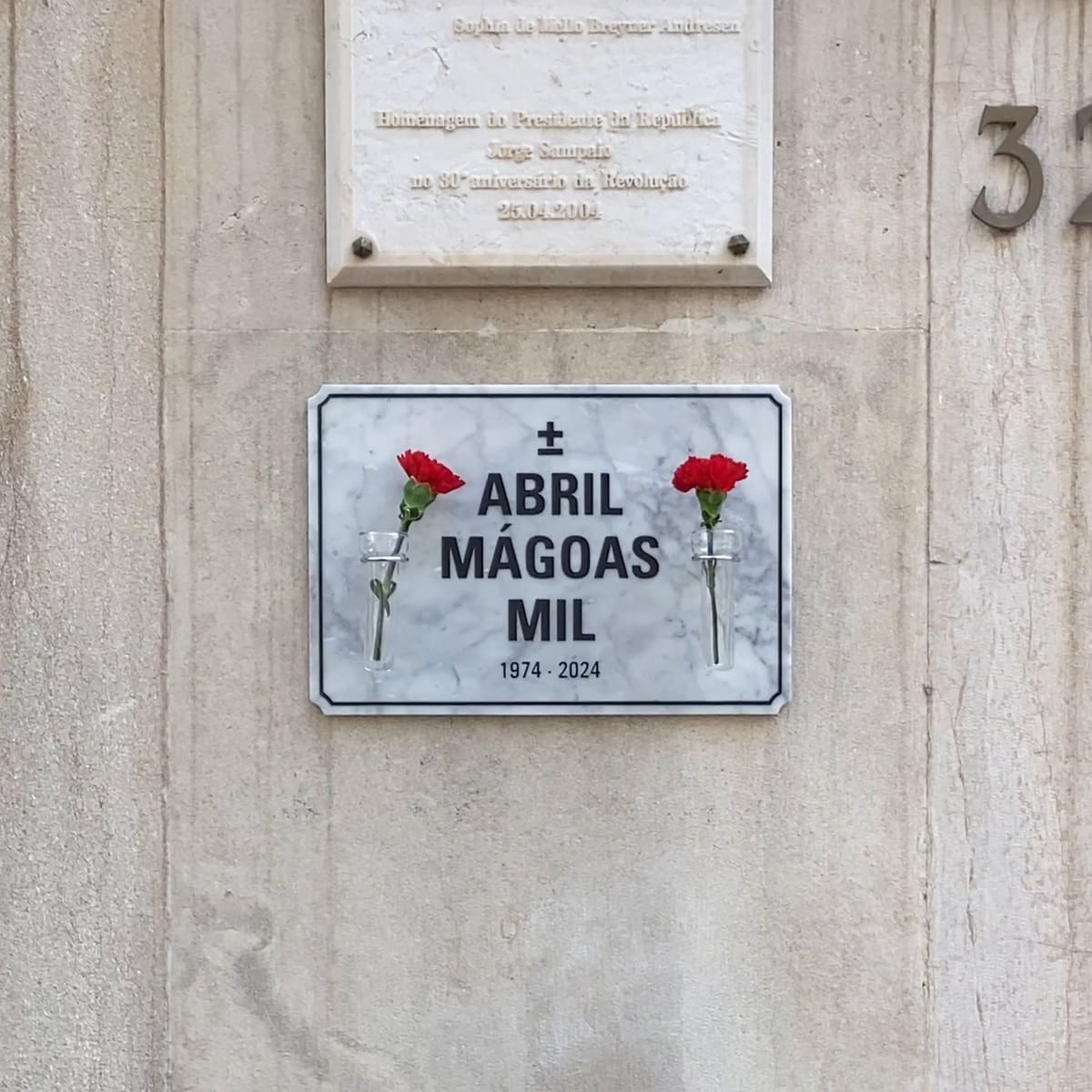
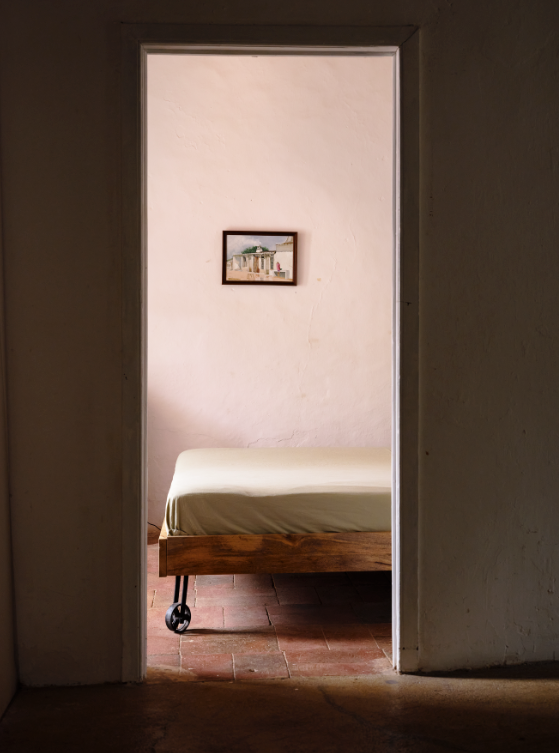
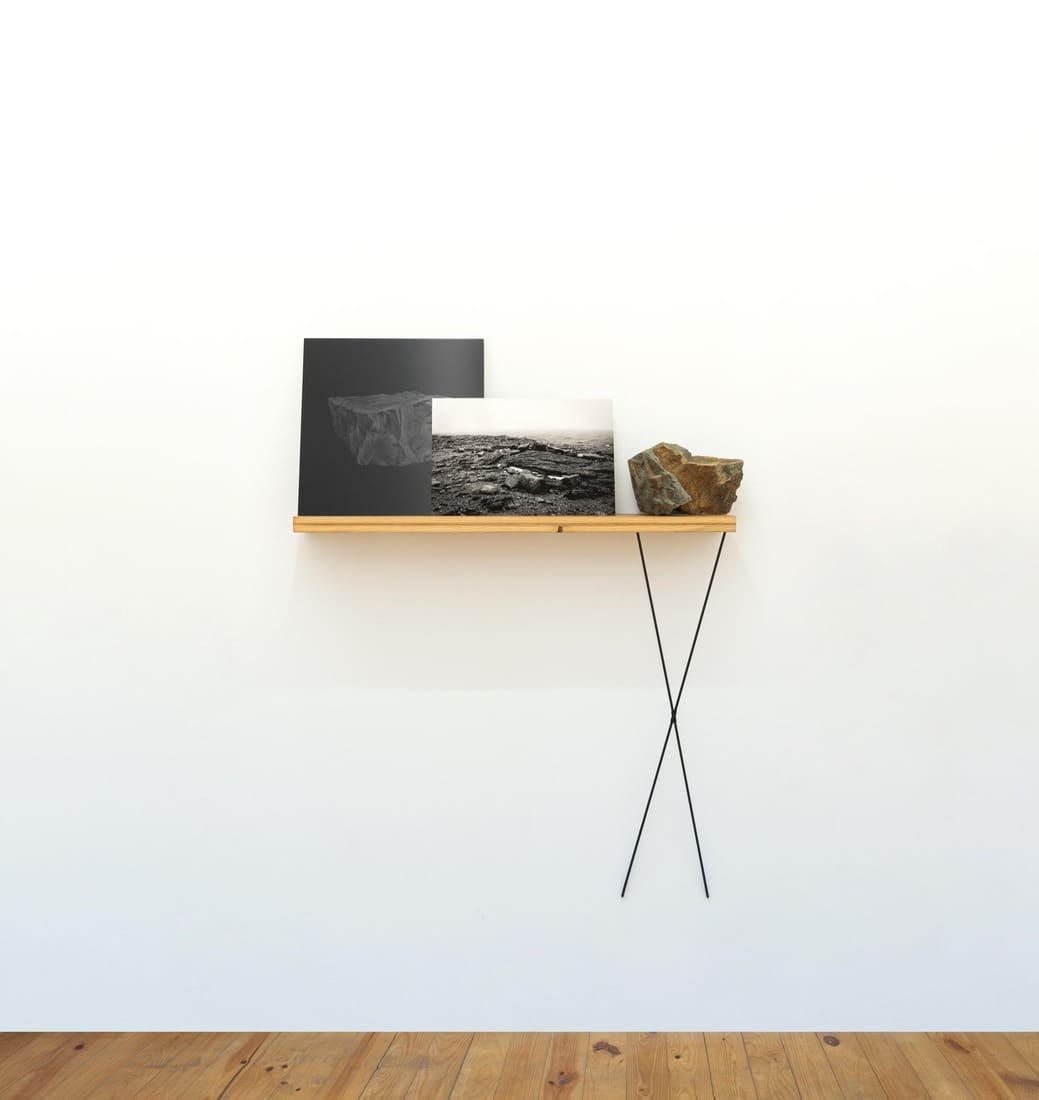
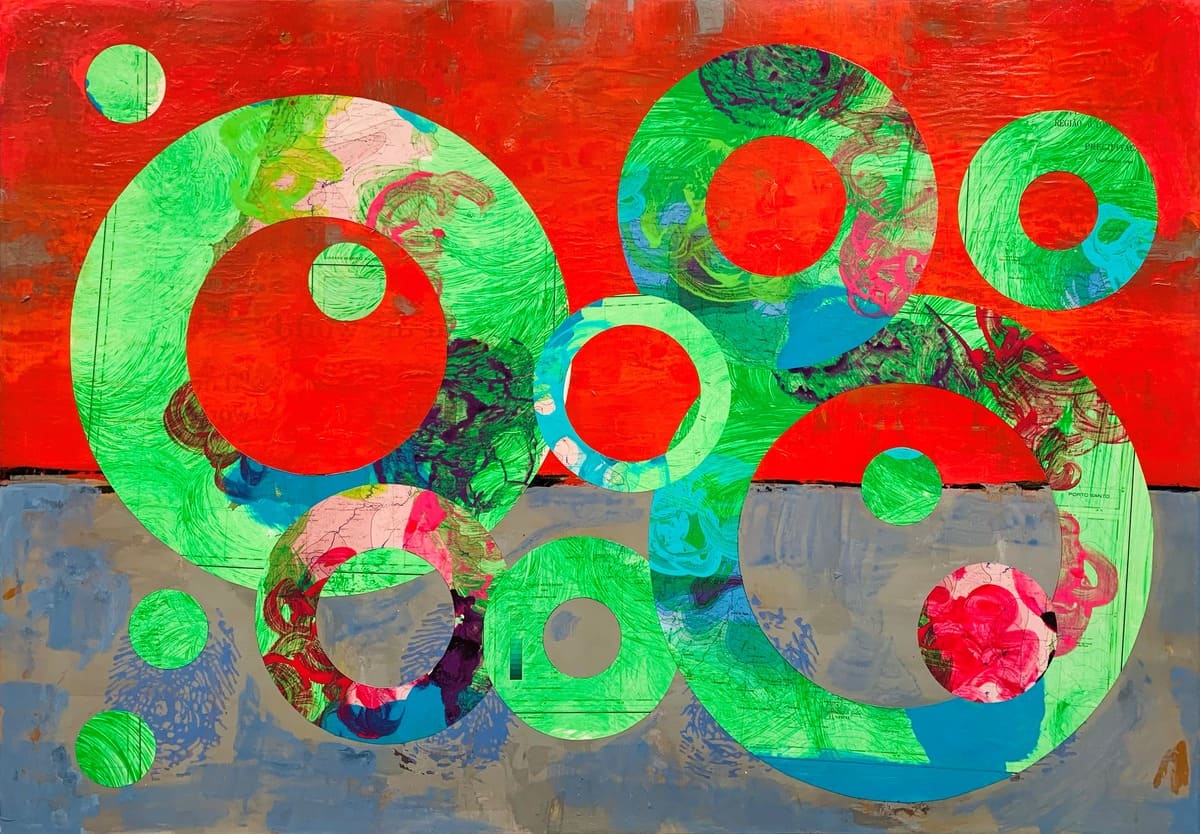
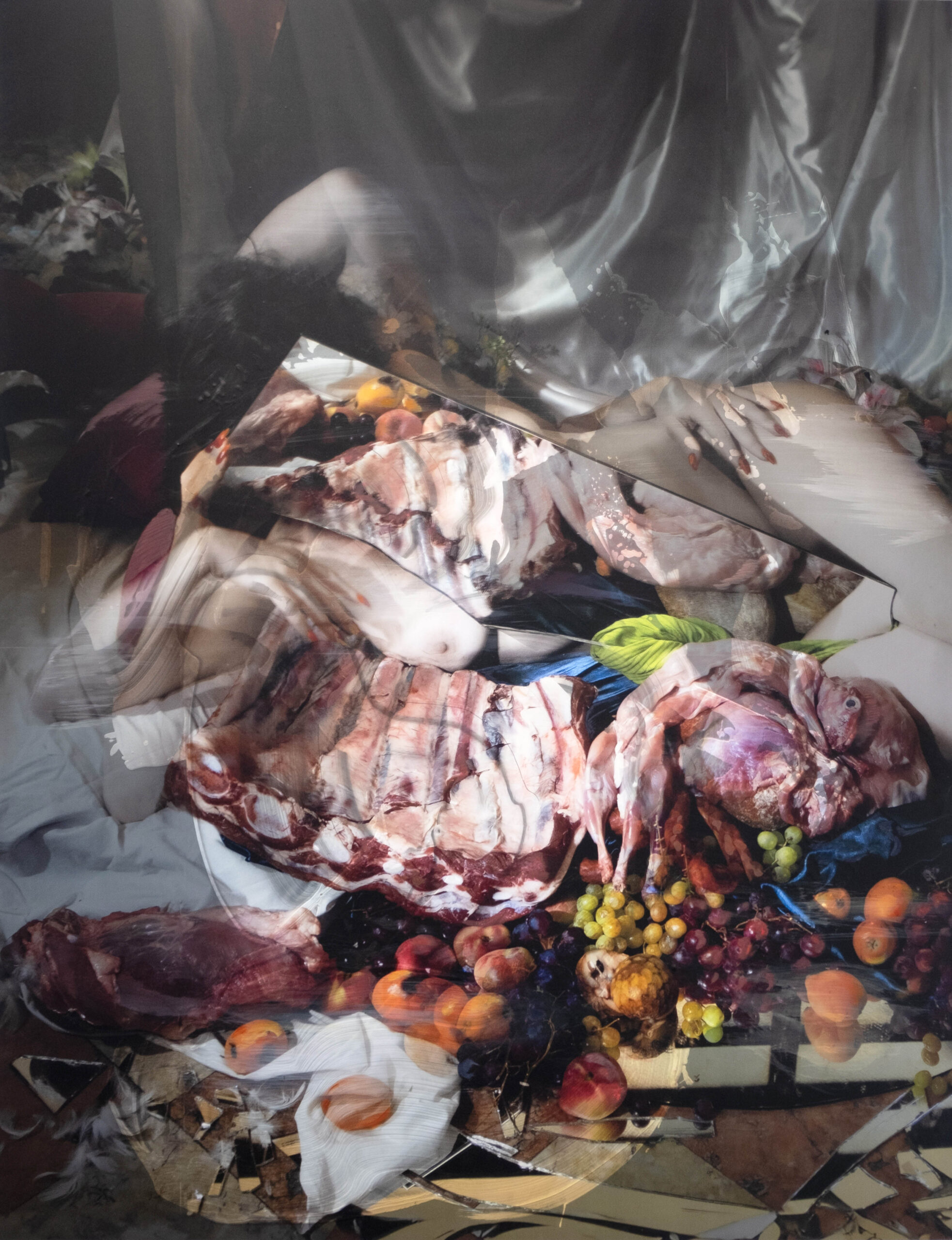
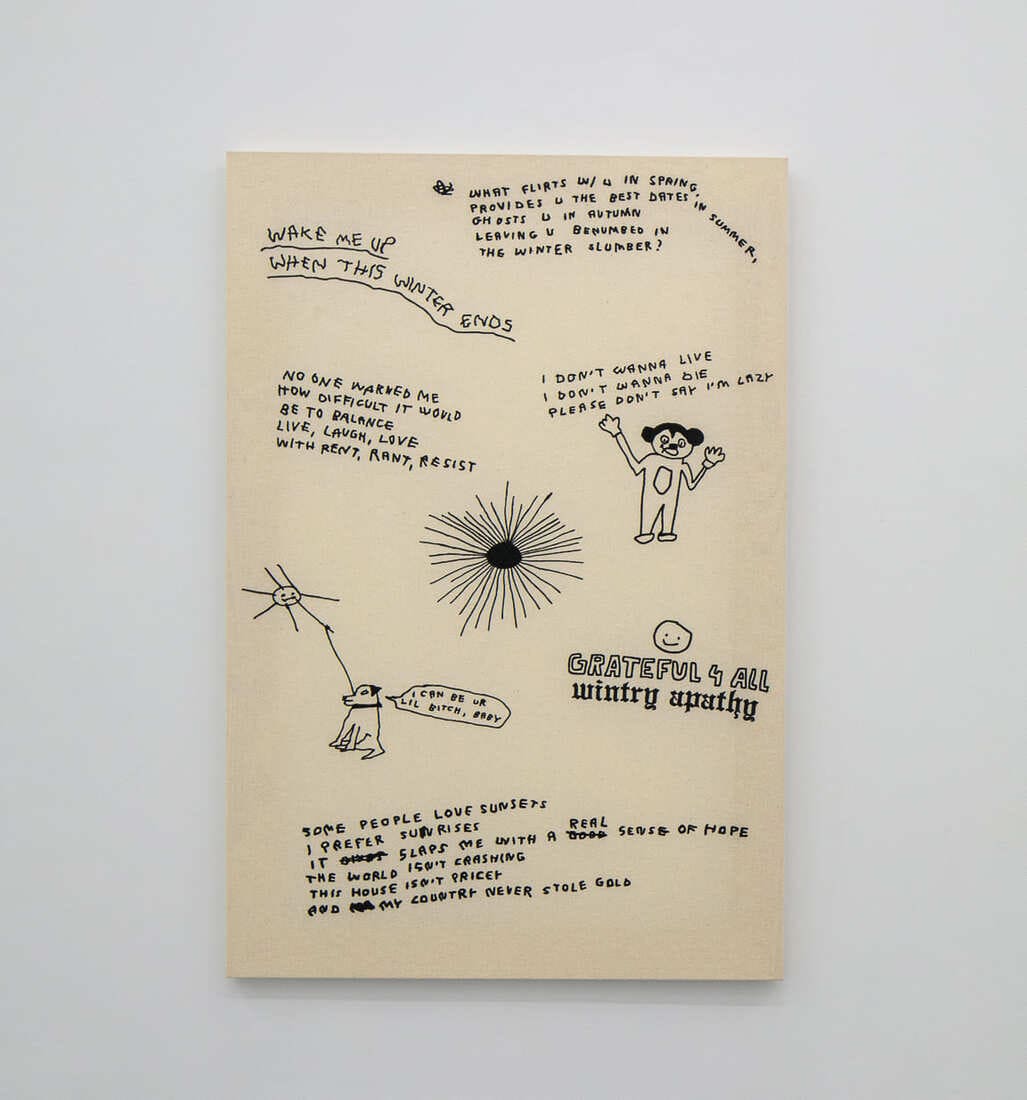
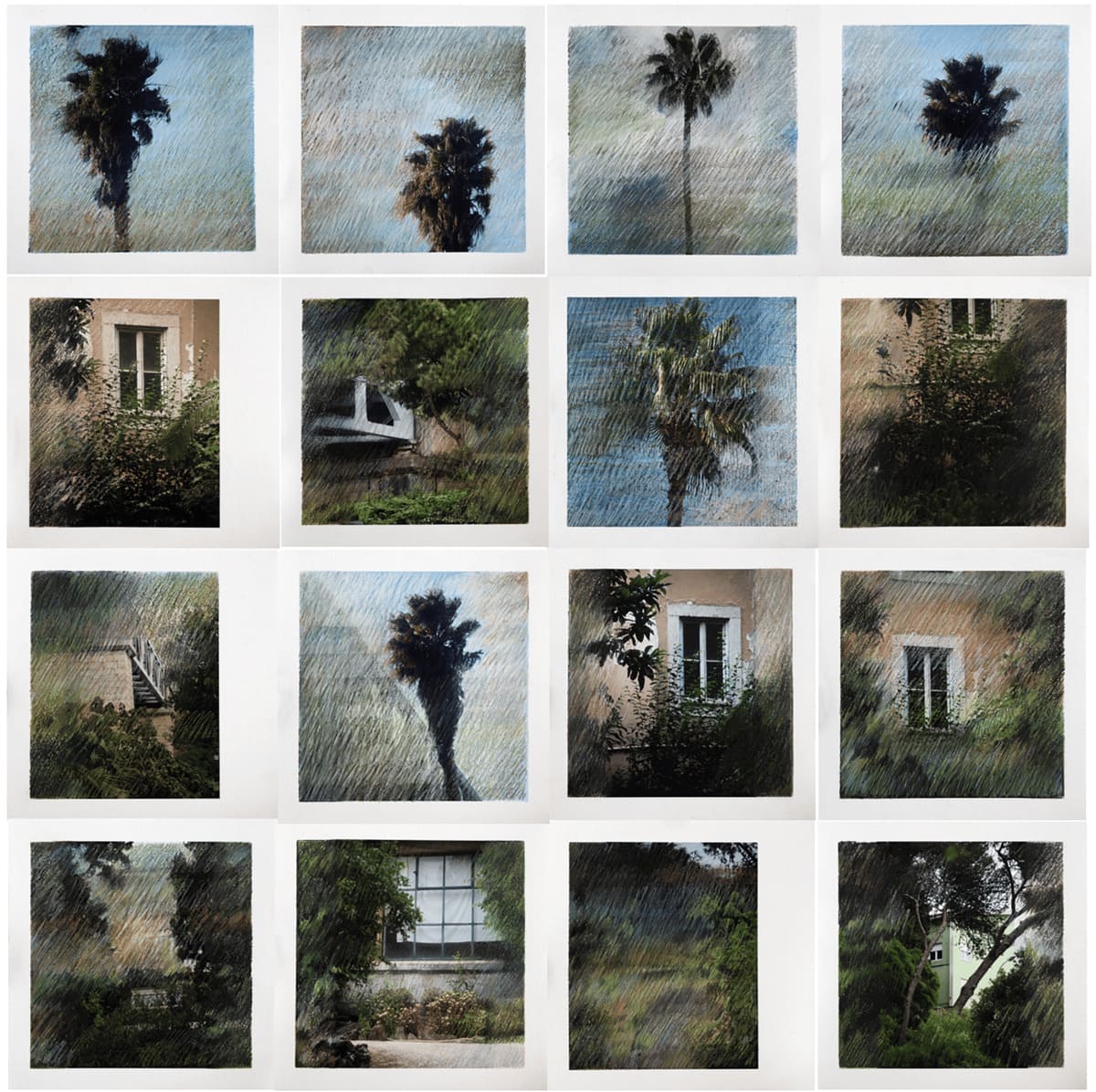
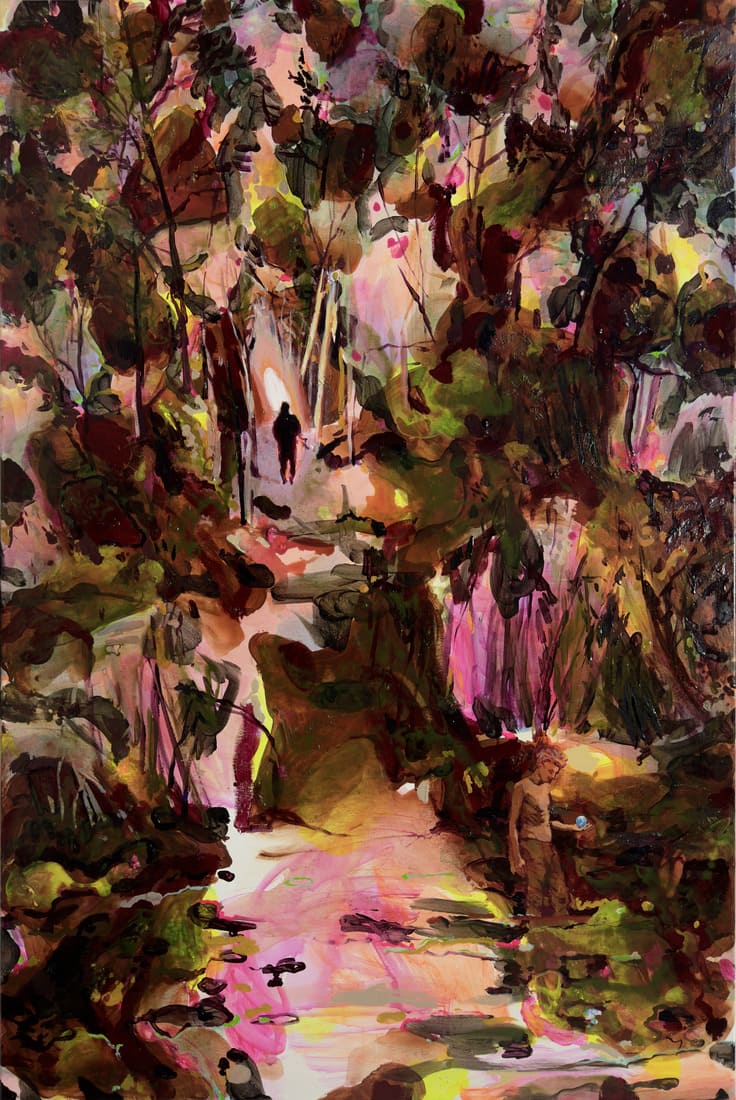
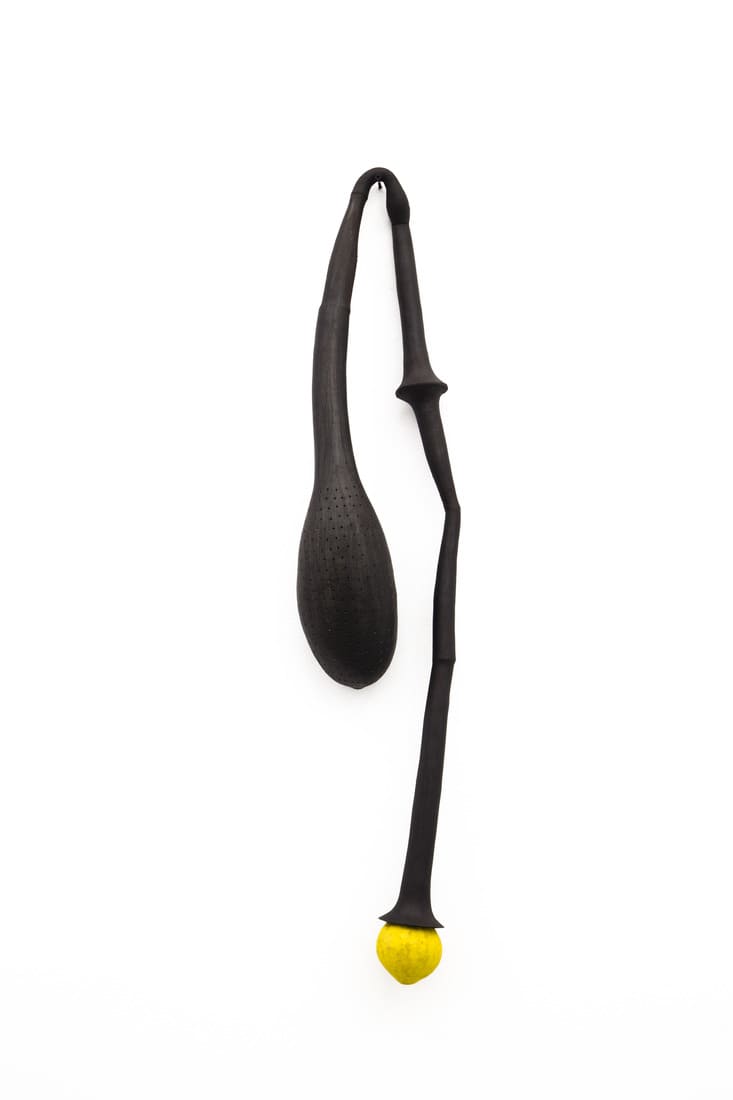
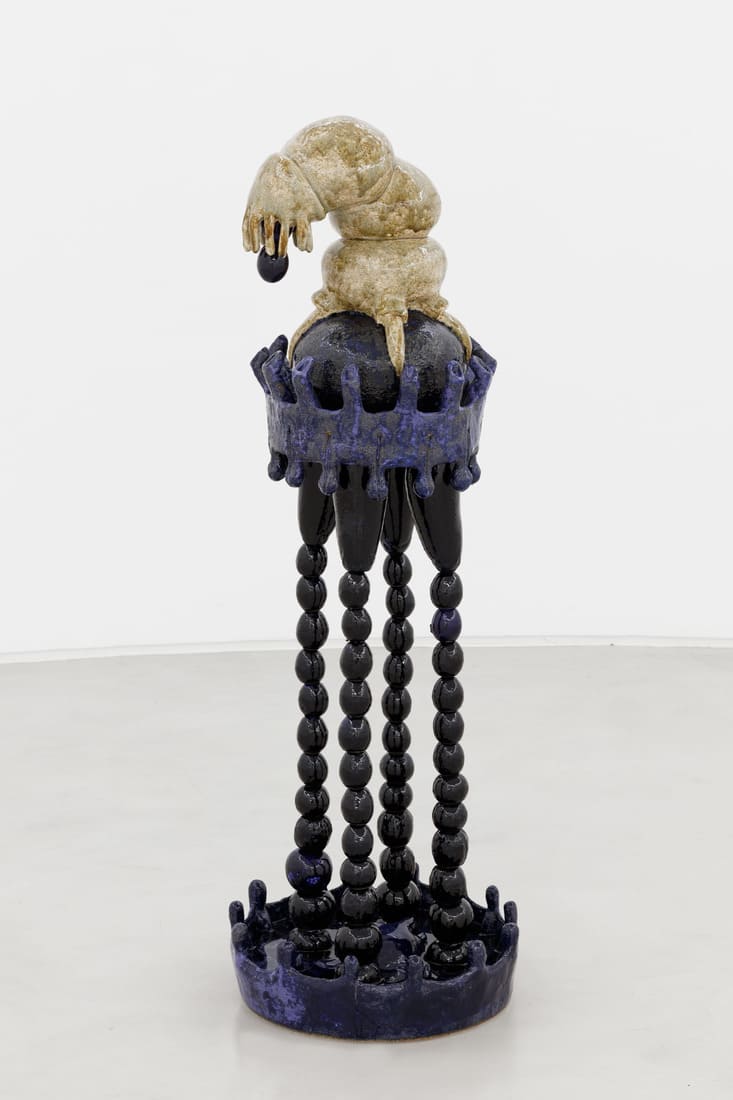
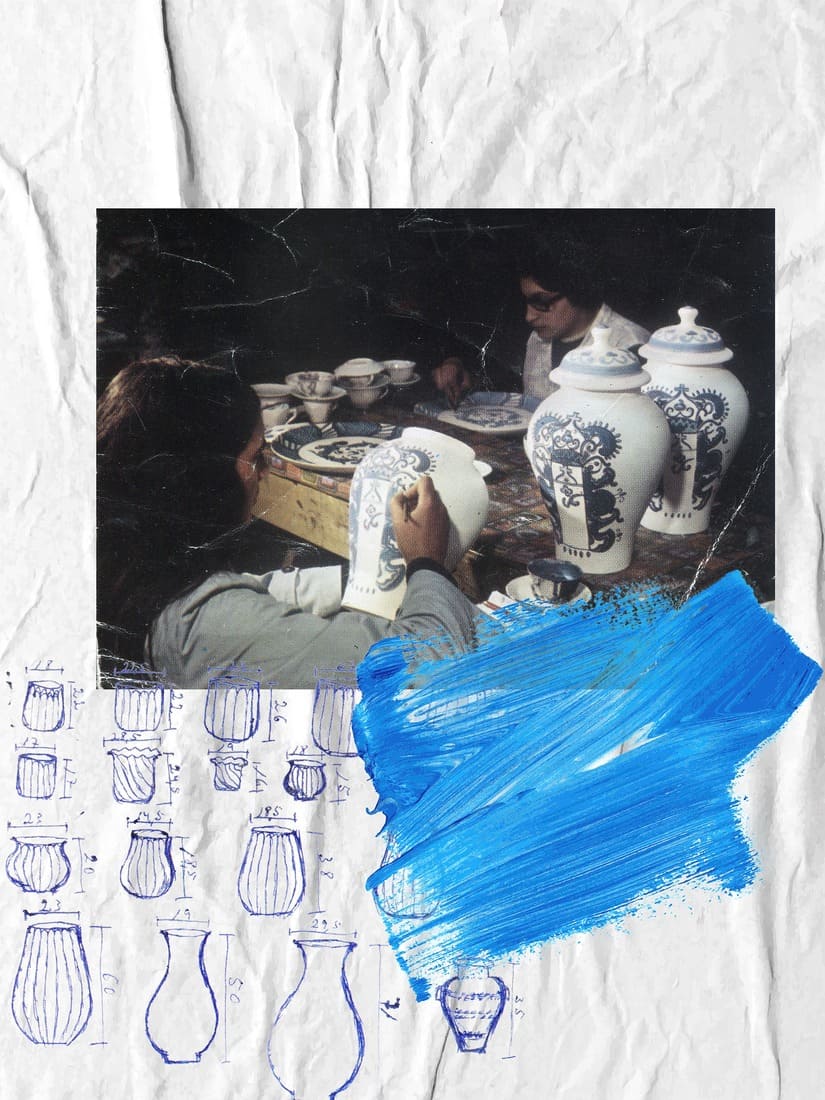
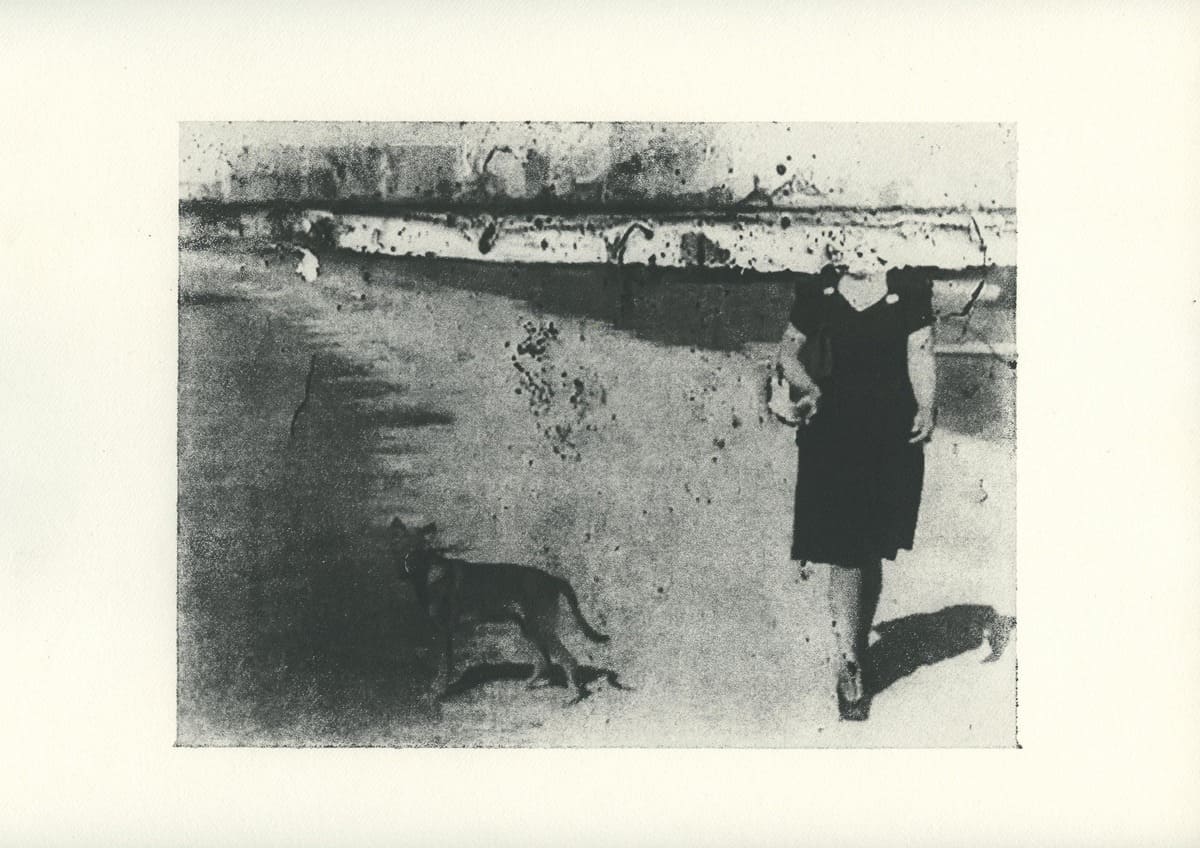
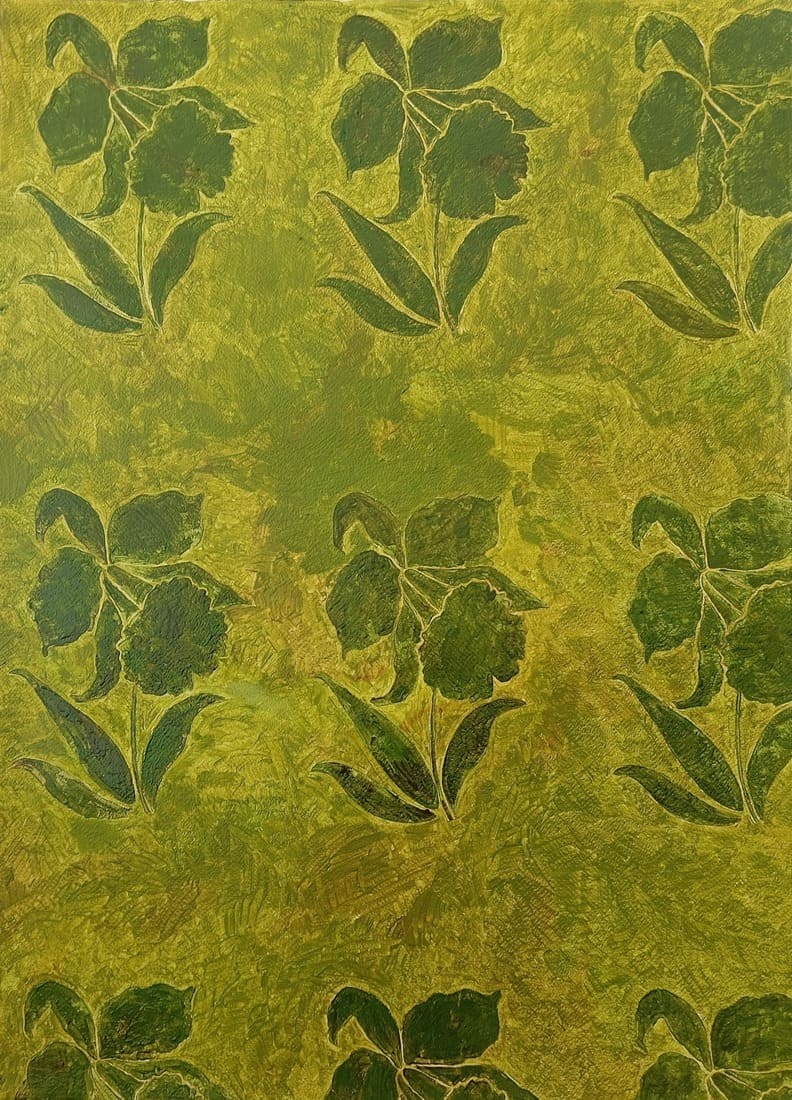
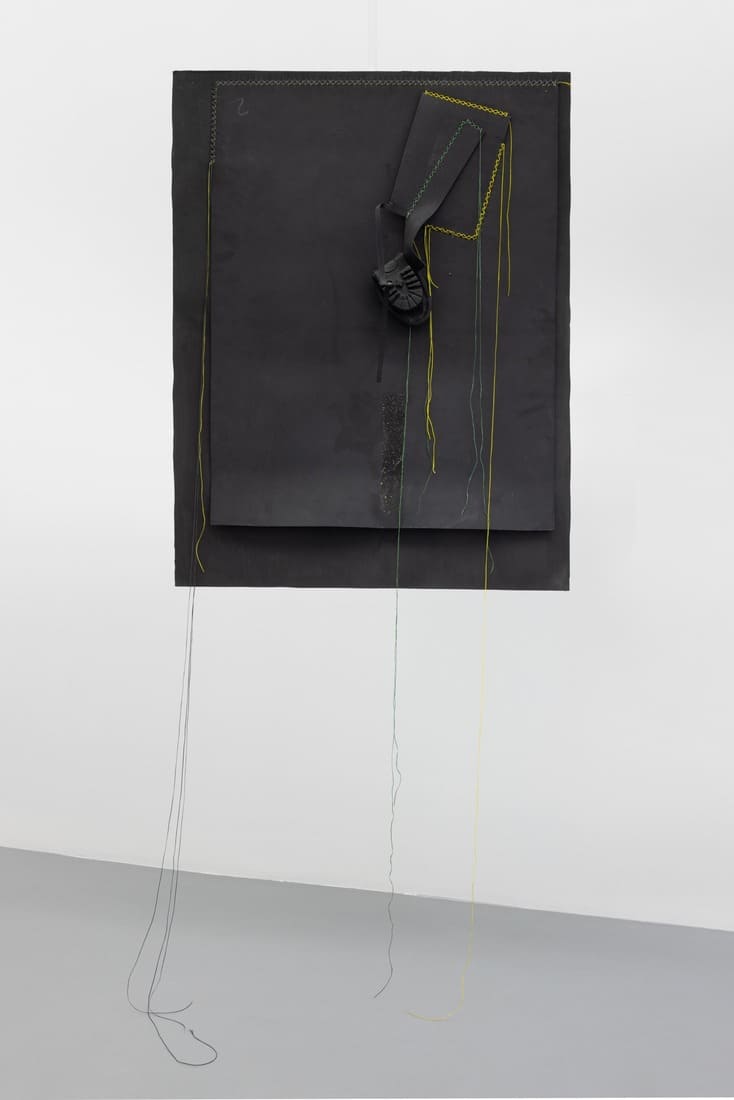
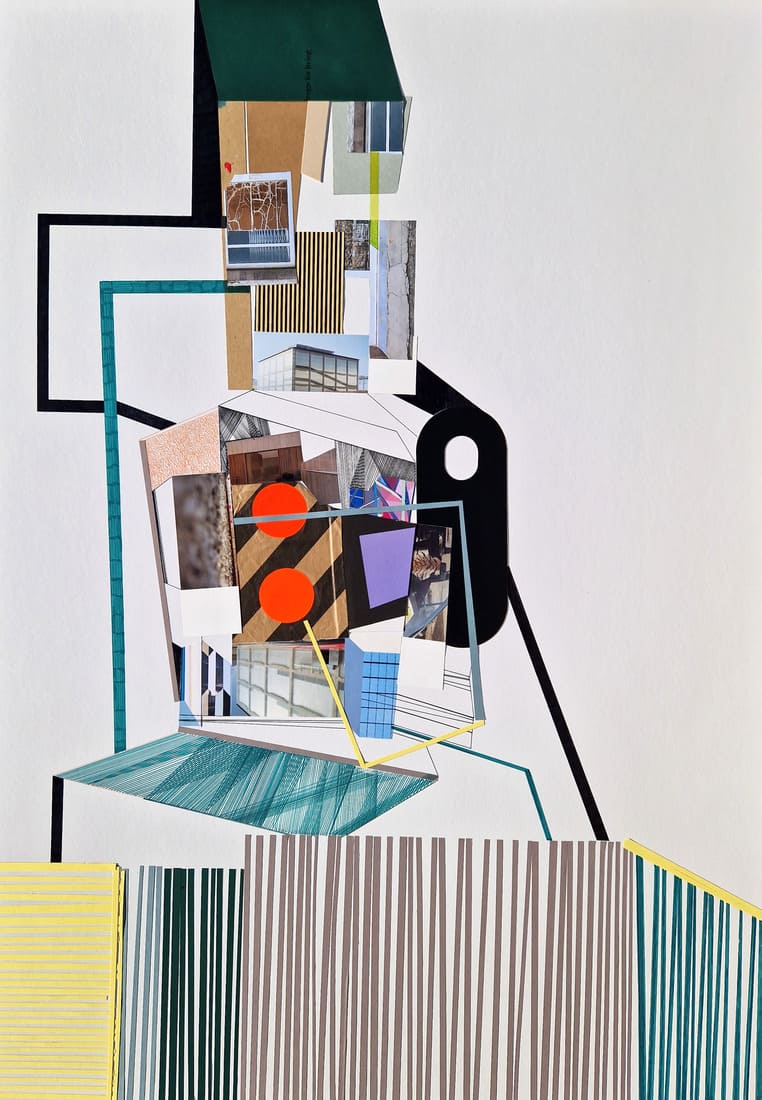
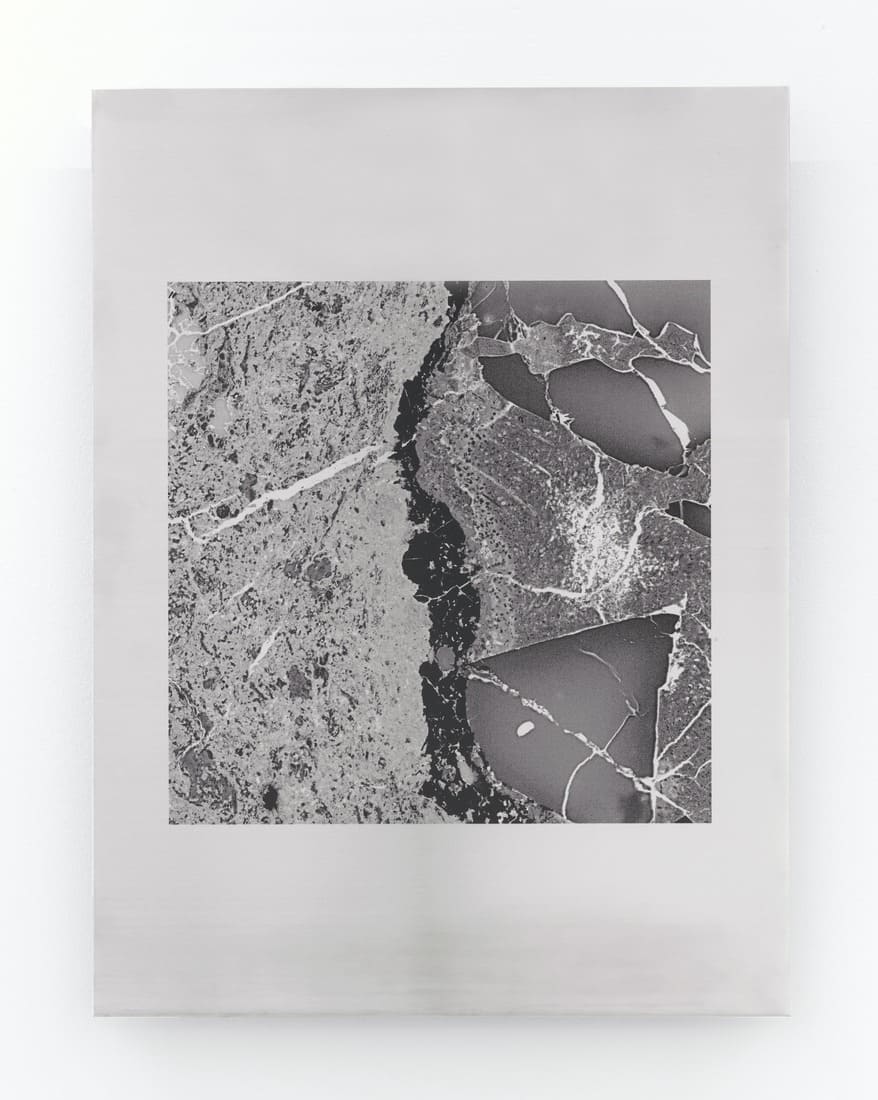
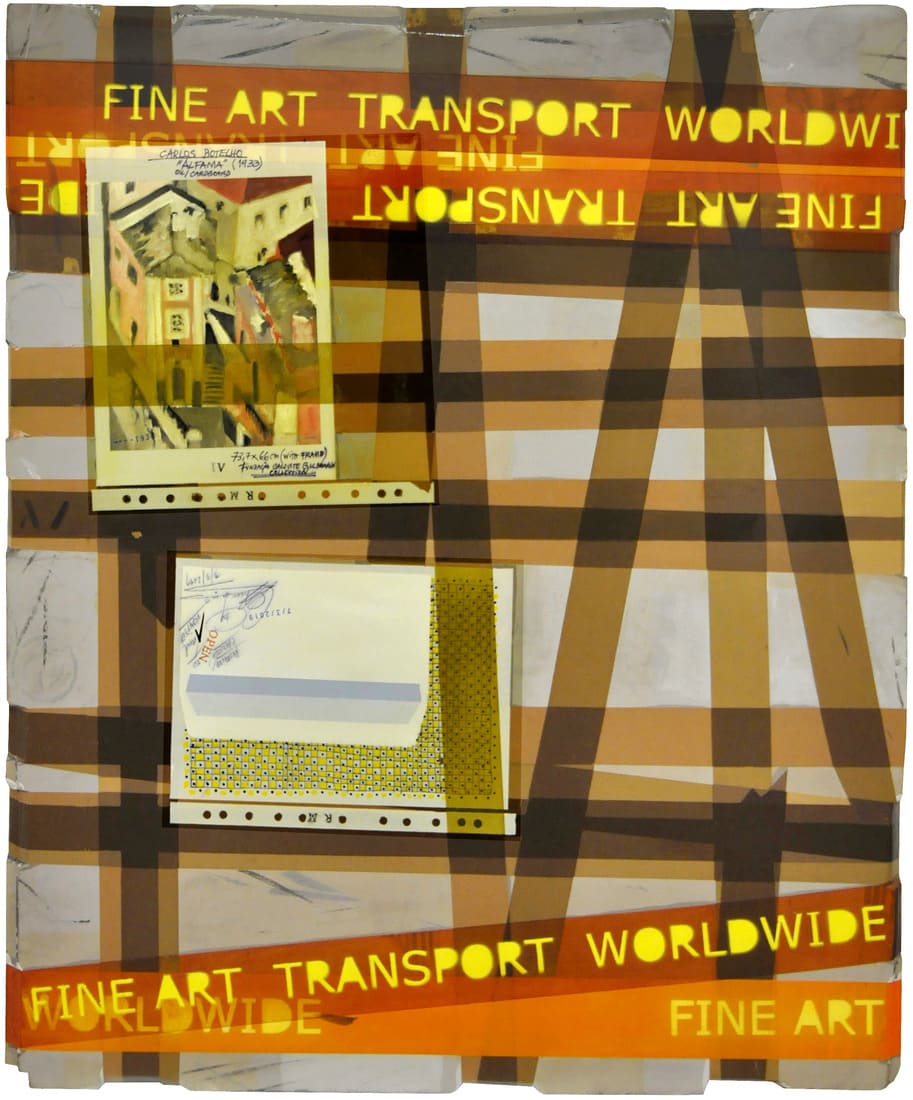
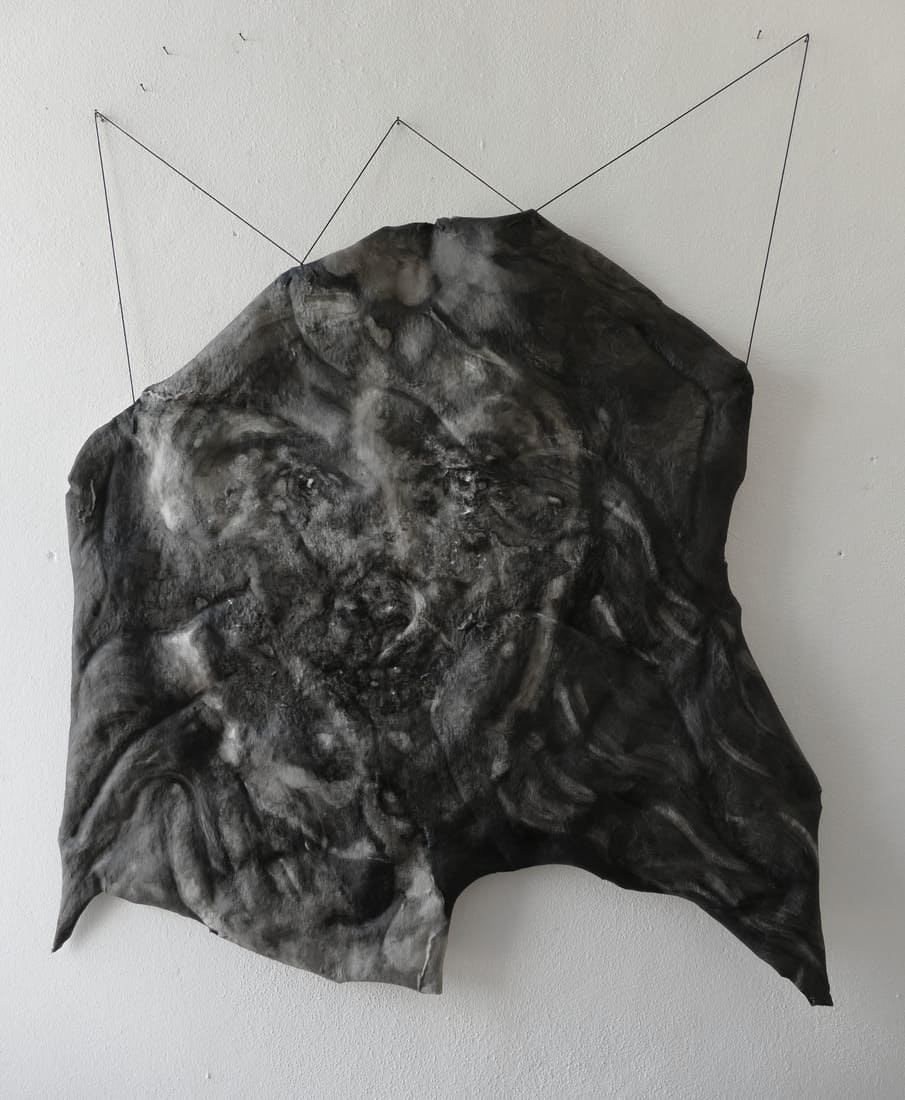
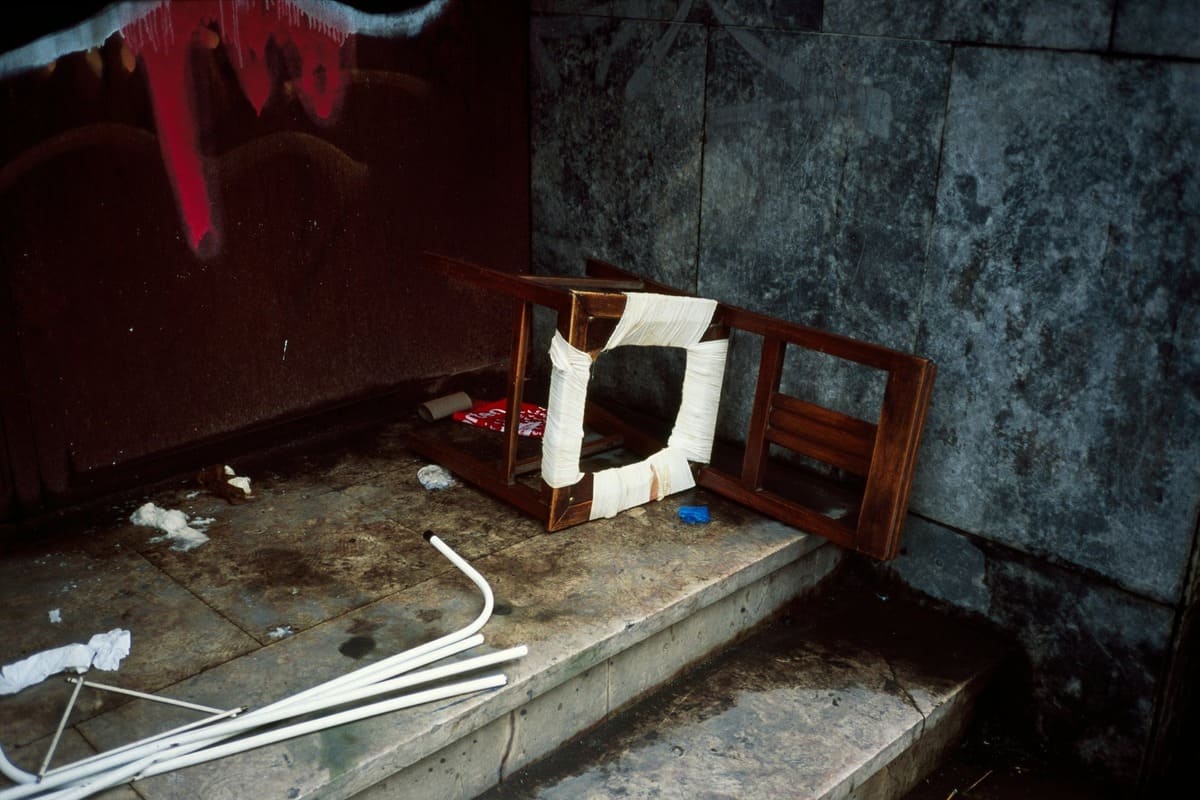
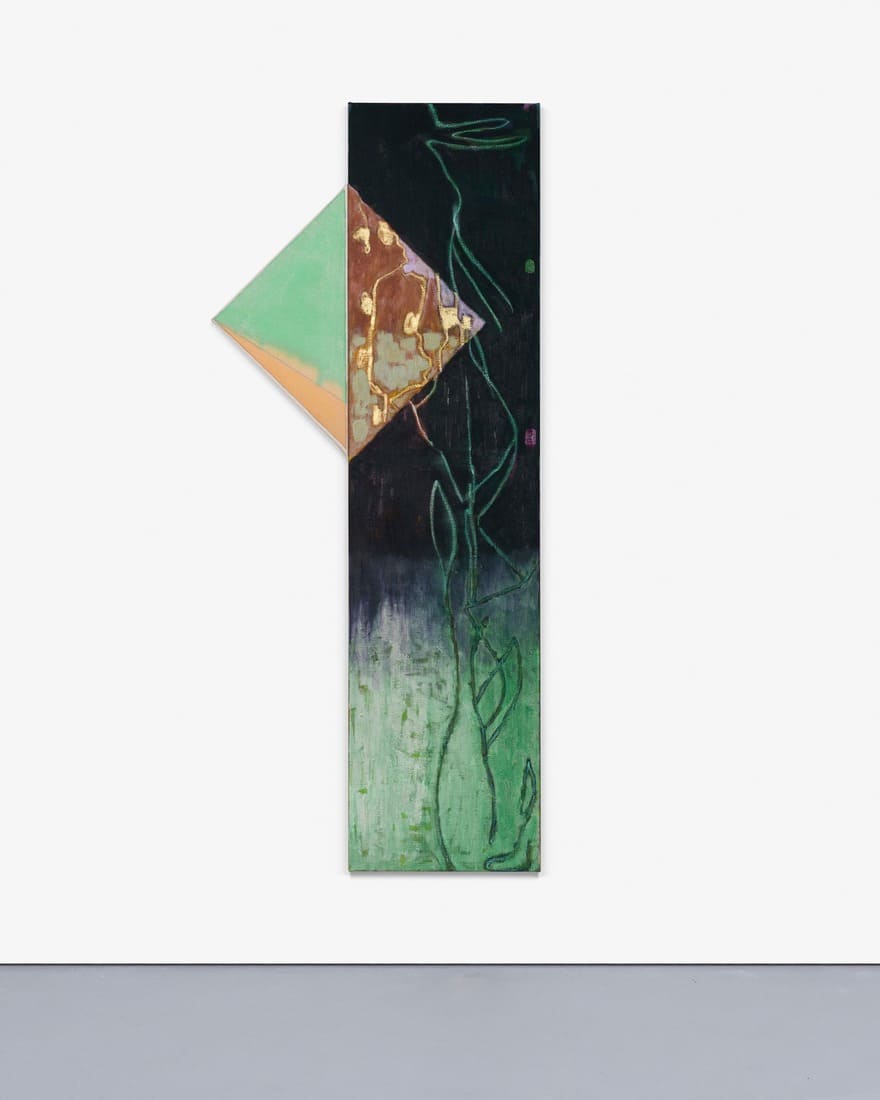
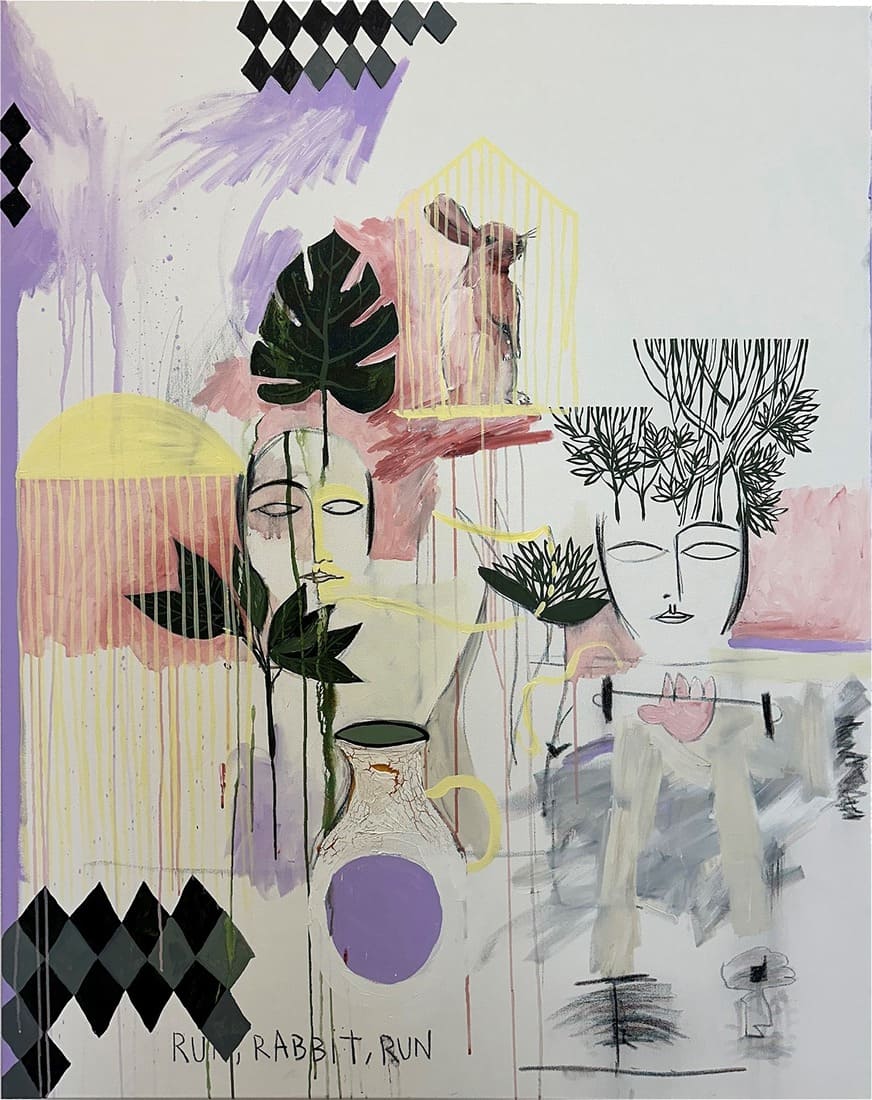

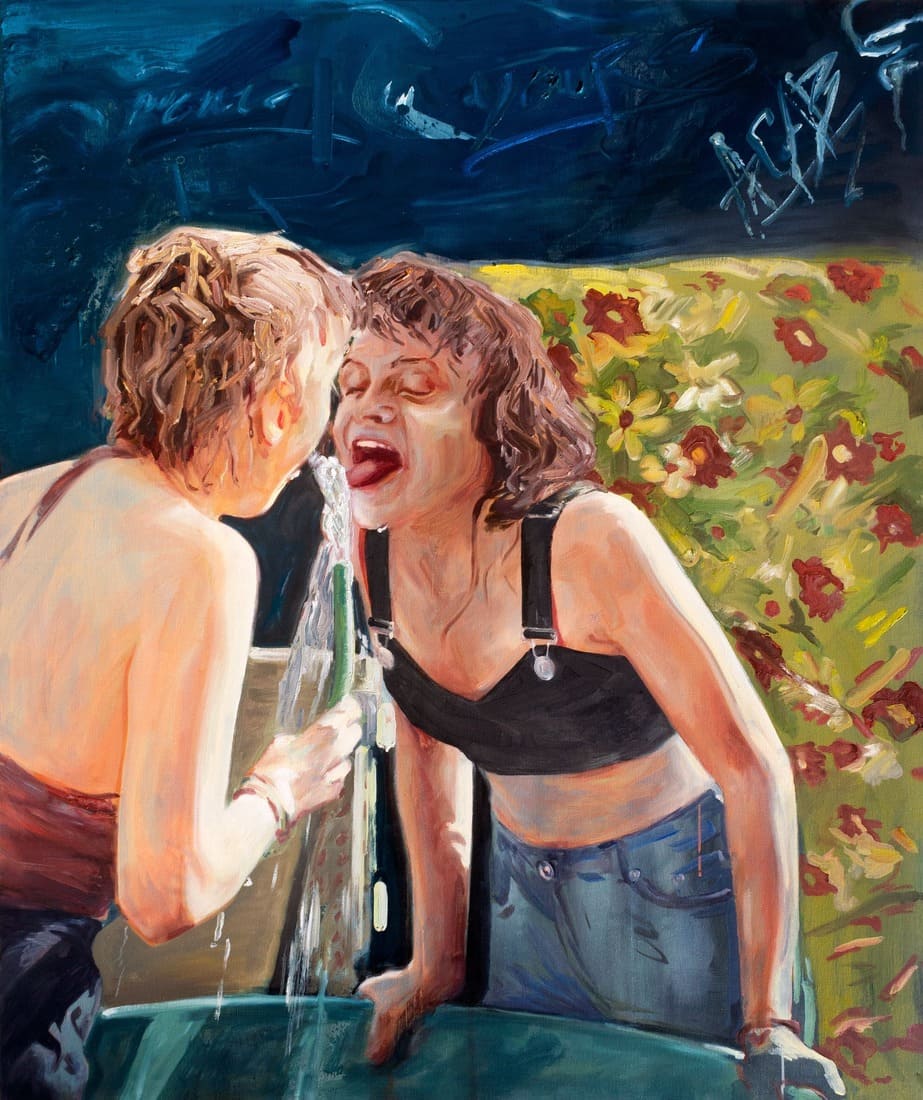
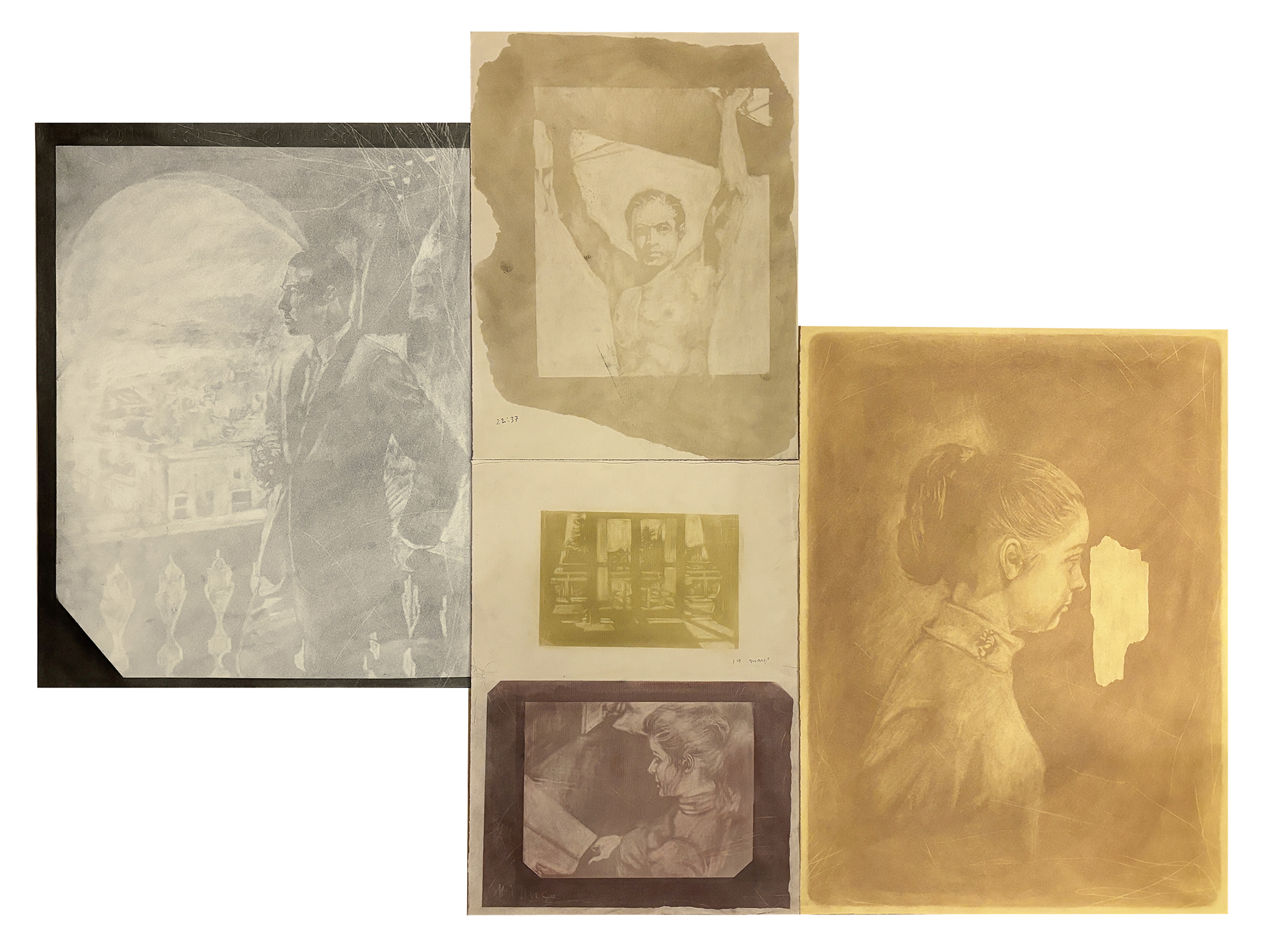
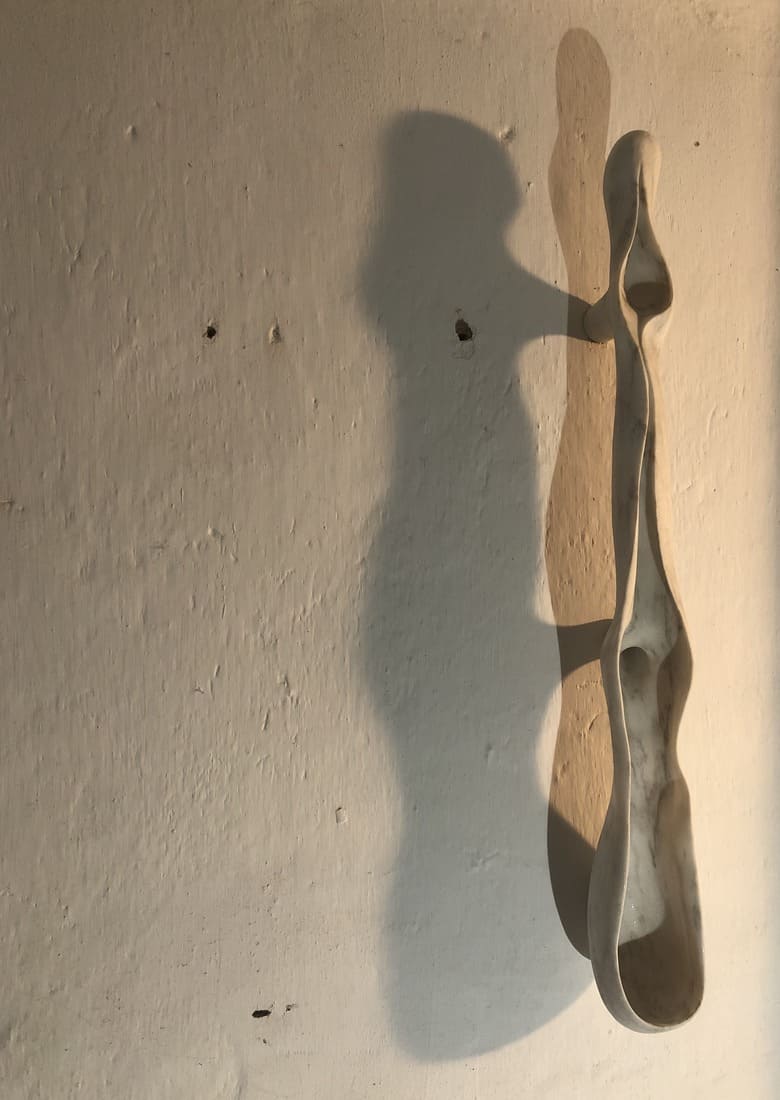
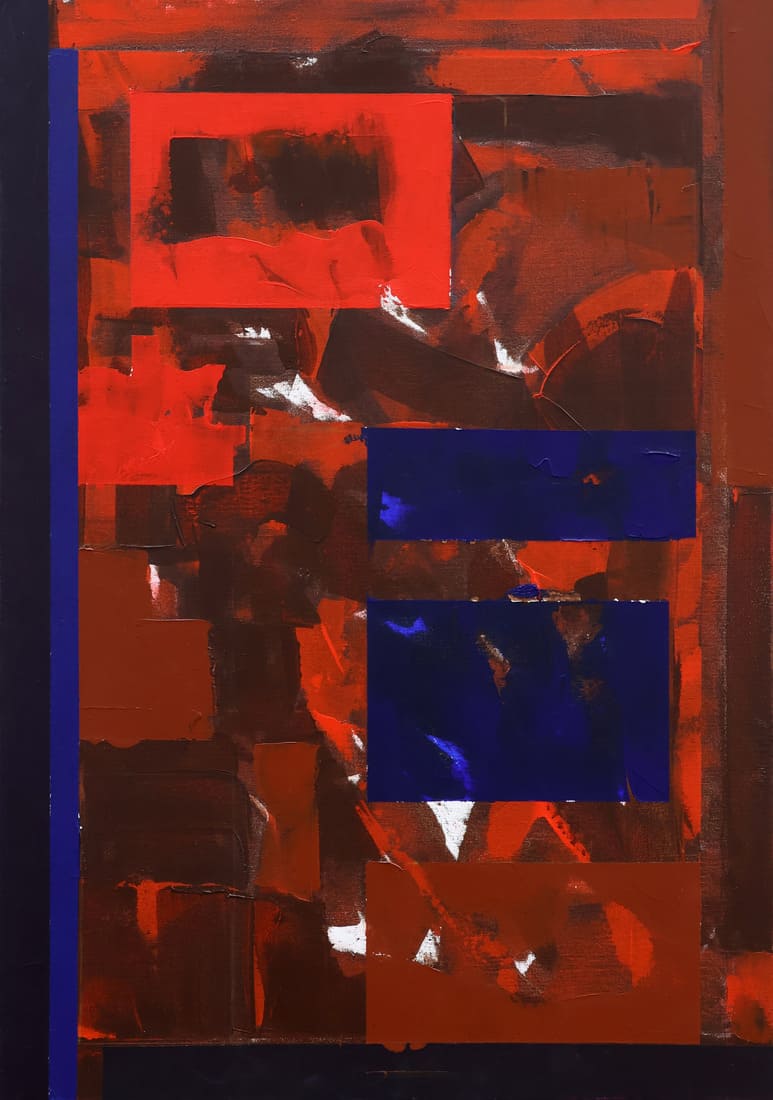
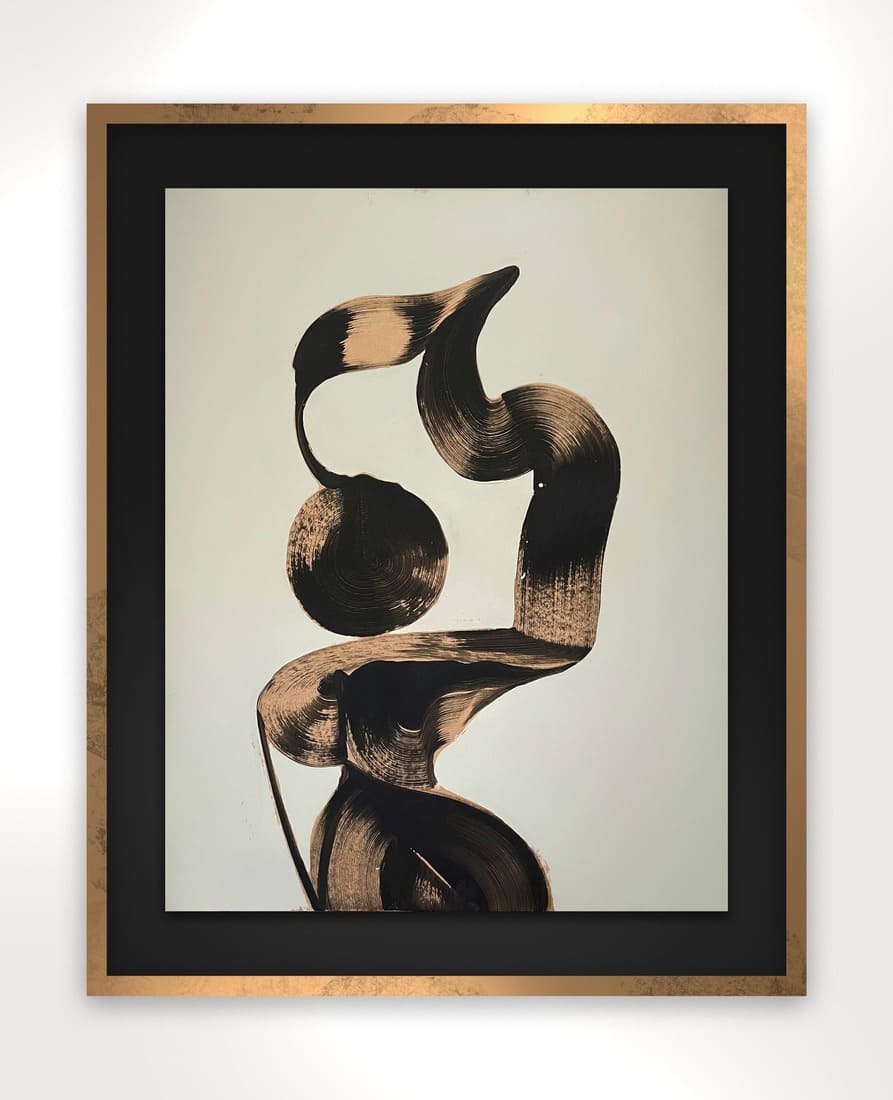
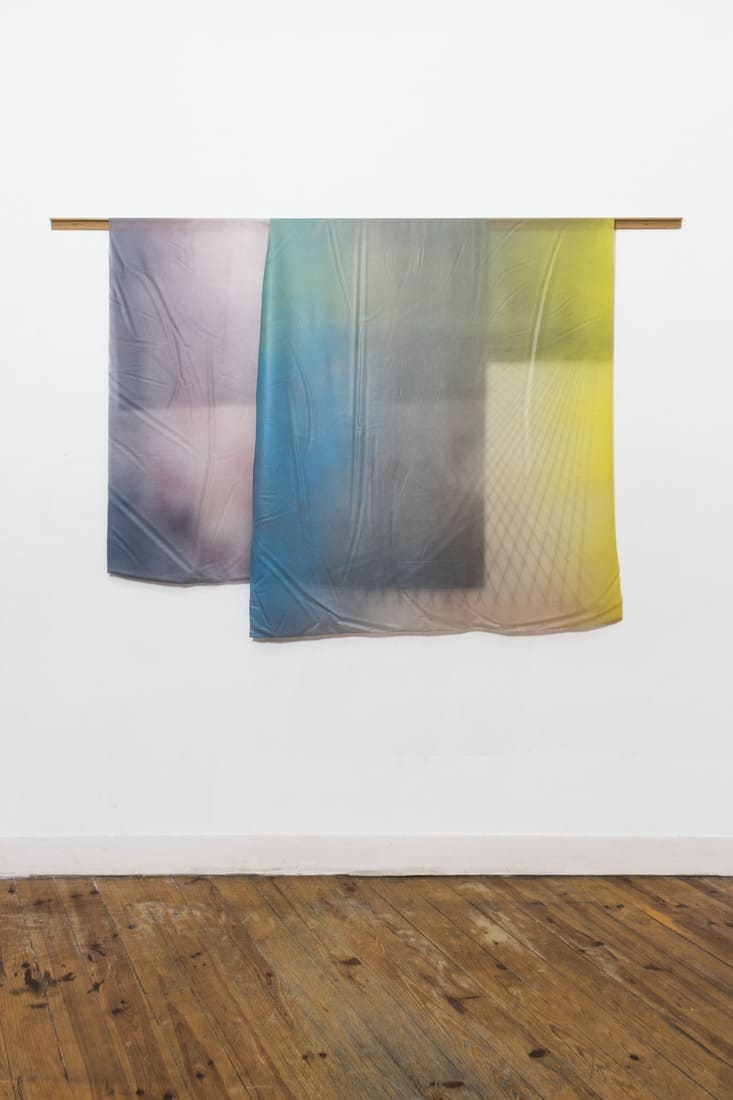




±MaisMenos± is an artistic intervention project by Portuguese artist and graphic designer Miguel Januário, which began as part of an academic thesis in 2005 and later took on a life of its own. On the eve of the celebration of the fiftieth anniversary of April 25, 2024, he went to ‘Largo do Carmo’ – the most symbolic place of the April Revolution – and placed, without authorisation, a marble plaque with two carnations on the facade of ‘Quartel do Carmo’, which read “Abril Mágoas Mil, 1974-2024”, conveying a mix of celebration and homage, of desolation and hope, of beginning and end.
±MaisMenos± has exhibited internationally at Urban (r)Evolution, Cordoaria Nacional, Lisbon, (2023), Forgotten – MACRO, Museum of Contemporary art of Rome, Rome, (2016) and Um Panorama Urbano, Caixa Cultural Rio Janeiro, São Paulo, (2014). ±MaisMenos± work has also featured in the António Cachola Collection, Museum of Contemporary Art of Elvas, Elvas, (2011), (2014) and is represented by Underdogs Gallery, Arco Lisbon.

José Pedro Cortes is a visual artist working with photography and video. Cortes’ photographs – being landscapes, portraits or still lives – function as a map of visual possibilities, exploring human presence in contemporary life. Like Cortes says: “My images reflect on a time of constant doubt: impulse or fabrication, vulnerability or strength, surface or something more.” A Room before a Window, 2023, is a photograph of a bare room with a bed and a small painting of a Portuguese landscape.
Notable exhibitions include One’s Own Arena, Muse da Eletricidade/MAAT, Lisbon, (2015), Costa at CGAC – Centro Galego de Arte Contemporánea, Santiago de Compostela, (2015) and A Necessary Realism, MNAC – The National Museum of Contemporary Art, Lisbon, (2018). José Pedro Corte’s work is represented by Galeria Francisco Fino, Lisbon, and Robert Morat Galerie, Berlin.

Marcelo Moscheta is a practice-based artist with rooted conceptual references. His research focuses on relations between Humankind and environment, and human interventions such as wandering and walking. He sees pathways as drawings. The tracks of an ancient people left in the desert over hundreds of years relate to displacement of bodies through space, like a a drawing over the surface of the planet. The image of an ancient pathway over the Serra da Estrela is placed together with a drawing of a stone and a sedimentary stone (xisto). This dialogue establishes a new relation between scales of time and space.
Notable exhibitions include, Teach Us To Sit Still, Colégio das Artes University of Coimbra, Coimbra, (2022), 8a, Bienal Do Mercosul, Porto Alegre, (2011) and A HistÓria Natural E Outras RuÍnas, Galeria Vermelho, São Paulo (2028). Marcelo was awarded The Pollock-Kranser Foundation grant from The Pollock-Krasner Foundation, (2017) and had his work published in Vitamin D2, New Perspectives on Drawing by Phaidon (2013).

Circles of Reality and Transformation features a vibrant interplay of circular shapes and contrasting colours, evoking movement and dynamism. The composition, dominated by intense reds and luminous greens, creates visual tension and draws the viewer in. The overlapping circular shapes suggest continuity and transformation, while the layers of colour add depth and complexity. Contrasting between the real and the abstract,
the work explores the plasticity of the visible and invites reflection on the
interconnection between reality and artistic expression.
Diana Costa’s work has gained international recognition, being exhibited in Overseas: When The Horizon Line Isn’t Enough, BADESC Cultural Foundation, Florianópolis, (2024), Porto/Cairo- Portuguese in Egypt, Nahdet Misr Gallery, Cairo (2018), SWAB, Barcelona (2011); and JustMad, Madrid (2011). She was awarded 1st Prize at the BHF BANK Exhibition, London, (2002).

Banquet employs a unique physi-digital technique to merge the reclining nude with Dutch still life imagery, highlighting societal gender norms and the objectification of women by transforming the body into another object in the banquet. Flowers blend sexual and funerary connotations; the apple hints at original sin, and the peach, a modern symbol through emojis, adds a contemporary twist. Meat symbolises mortality and objectification, while the rabbit, traditionally a signifier of hope, appears foetal and skinned. Feathers suggest disturbance, and the body, poised in a classic pin-up stance with blood-red fingernails, blurs the lines between predator and prey.
Exhibitions include Flesh & the Mirror – The Self-Image of Rebecca Fontaine-Wolf, Haus Kunst Mitte, Berlin, (2024); and Lost Girls, InFems Art Collective at Flowers Gallery, London, (2023). She was commissioned to produce work for Carolina Herrera for International Women’s Day (2022), spoke at Hauser & Wirth with Herstory: Rebecca Fontaine-Wolf, Somerset (2019), and was winner of the Chelsea Arts Club Trust Award for MA Studies (2013).

Cure my S.A.D. 2 is a digitally embroidered piece that explores sentiments of hopelessness and a lack of future, juxtaposed with the ever-evolving realm of internet trends and personal utopias. S.A.D. stands for Seasonal Affective Disorder, and this linen canvas is a eulogy to the end of October and the beginning of November, a period of systematically established sadness and occasional feelings of entrapment, in a country that depends so much on the romanticisation of summer. In this work, Wasted Rita considers the cyclical nature of this seasonal melancholy, and how being in a politically fragile country going through a housing crisis makes it harder to accept the cold.
Exhibitions include the solo presentation As Happy As Sad Can Be, Galeria Underdogs, Lisbon (2018) and group shows Eco-Visionários, MAAT, Lisbon (2023) and Bienal de Cerveira, Fundação Bienal de Cerveira, Vila Nova de Cerveira, (2023). She has completed the Bedstuy Art Residency, Funded by FLAD, New York, (2023), and her works were included at Banksy’s Dismaland, Weston-Super-Mare (2017).

The work (ins.tan.tâ.ne.os) results from photographic records of various moments of the regular trips that Conceição Abreu makes between home and Lisbon, and which she reiterates through drawing. With a haptic sense, the work is generated through the practice of photographing and the act of scratching/drawing the photographic images that originated in these moments. Through the body that moves, registers and draws, space is perceived and remembered. The work (ins.tan.tâ.ne.os) is, therefore, a set of small gestures that organise the sensitive experience and give the space travelled a sense of place.
Conceição’s Abreu’s exhibited in A Line Made By Hand, Sociedade de Belas Artes, Lisbon (2023). DE Fils Ou De Fibre, Centre d´Art Contemporain, Meymac, (2018), Nas Imediações do Desenho, Carlos Carvalho Gallery, Lisbon (2014); and ENTRETEMPOS, Caroline Pagès Gallery, Lisbon (2013). The film …and around…and around… and around, co-created with Carlos Coelho Costa, won Best Experimental Short, New Short Film Agency, 1st Edition, Berlin (2014).
Paulo Arraiano’s practice relates to the idea of visual seismography, assessing surges concerning new natural, social and cultural paradigms. This artistic production interweaves with his research involving matter and anti-matter, and engages the body, the landscape and technology to address questions concerning climate change, biosphere, extinction, transhumanism, natural and human diasporas and the anthropocene. Here, through the twodimensional impression of an image, which refers to a natural or artificial fossil–something previously characterised by its matter and threedimension— the artist questions, in relation with the anthropocene, the human being’s immersion in a virtual environment far from the physical reality of our bodies and the natural space around us, inhabiting countless places but often without existing emotionally or materially in anyone.
Notable exhibitions include A certain instance of verrition, Leal Rios Foundation (2023), Lisbon Becoming An Island, La Casa Encendida, Madrid. (2022) and Visual Natures, MAAT Museum, Lisbon (2022). Paulo gained International recognition at Garden of Gods, Vellum, Los Angeles (2020).

For Isabel Sabino, painting and drawing are the most fruitful means of trying to think with freedom, without the rational constraints of common life. She believes there is, at most, a mental previous residual image, poorly defined, that painting pursues and materialises in its own way. The more abstract formalisation helps to find an engaging climate of colour, space and rhythm, for a landscape with figures that define scales and, in the connection of their action with possible voices, a relationship with language. In this painting, the second in a series, heavy stains and lights of diferent colours fill the space, with two more visible figures.
Isabel Sabino’s work has been exhibitioned internationally, at Quid, Centro Cultural de Cascais, Cascais, (2024), Drawing Room, SNBA Lisboa e Madrid, (2023 and 2022), Galeria Arte Periférica, Lisboa, (2023), Artfem, Women Artists, Bienal Internacional de Macau, Macau, (2020), Ela, Sociedade Nacional de Belas Artes, Lisboa, (2019) e Portuguese Modern Art. 6 artistas, Museu de Arte Contemporânea de Minsheng, Pequim, (2017).

Dream Speakers a project with different sculptures that allude to dreams, sound, speech and listening. The artist collects gourds from neighbours and different farmers and with them, and through a process of cutting, gluing and painting, creates different works/installations. Gourds are historically linked to the production of musical instruments and the transportation of water and wine. Here they have strange, visceral shapes, with elongated necks and growth deformations. The artist is interested in working with these formal ‘errors’ but also with their thermal and acoustic characteristics in the production of these “sound promises”.
Dalila Gonçalves’s exhibitions include The Grass is Always Greener, Museum of Contemporary Art, Roskilde, Denmark, (2014), Colunas de Ar, Galeria Quadrum- EGEAC, Galerias Municipais, Lisbon, (202), and Paper Routes, Women to Watch, National Museum of Women in the Arts, Washington, (2020). Her work is held in the Museu Coleçcão Berardo, Lisbon, (2020). In 2018, she completed an artistic residency at Pivô Arte e Pesquisa, São Paulo.

Francisco Trêpa’s practice deeply investigates the symbiotic relationships that underpin ecological and existential systems, utilising a variety of materials (ceramics, wax, wood) to create sculptures that embody ideas of transformation, transit, and transmutability. This sculpture is the first piece in a body of work that the artist has been developing over the past two years. Inspired by a larva, the creature atop this curved stage/ fountain bends before itself, grasping a black sphere. This work has been a pivotal milestone for the artist, opening the doors to theirartistic exploration of ‘Sci-fi Baroque’.
Exhibitions include Flor Cadáver, Galeria Foco, Lisbon (2024), Hiperderme, Museu Nacional de História Natural e da Ciência, Lisbon (2022), ArcoLisboa Art Fair, (2023); and Só porque foi, e voou, curated by the students of Estudos Curatoriais da Universidade de Coimbra in partnership with, Fundação Millenium BCP, Umbigo LAB, Museu Nacional de Arte Contemporanêa, Lisbon (2024). In 2022, he was awarded the Young Artists Prize, CarpeDiem Millenium BCP Foundation, P31 Lisbon.

RitaGT is a critical and intervening artist, approaching themes such as memory, identity or the importance of human rights. Since the 19th century, ceramics have been used as a symbolic medium for conveying a possible Portuguese cultural identity. Often emanating from the sphere of domestic and rural labor, women can be found at the center of their industrial production and the ideological circulation associated with it. RitaGT currently lives and works in Viana do Castelo, a city where the ceramics industry flourished in the 1950s and 1960s. Now abandoned, these factories are witnesses to a certain historical and economic period. It is this rescue of the symbolism and iconography of a past, of this intangible heritage, that the artist promotes when she develops an investigation materialized in the production of new works in ceramics, video, and performative presentations.
RitaGT’s works have been shown at the Venice Biennial for Design, Venice, (2022); Museu Duty Free, ARCO Lisboa special projects, Lisbon (2019); and We Shall Overcome!, Museu do Chiado, Lisbon (2015).

Frame Collision (II) (2024) makes use of film stills that have been found in the public domain, converted to digital, and in the process, lost part of their visual legibility. The resulting works capture the second in which two frames of the twenty-four frames that make up a second collide into one. This frame is then printed by the artist using the gum bichromate technique, so that the digital error is now embodied in an image produced using an entirely manual method that harks back to the beginnings of photography and its own frustrations in wanting to remain close to painting and its uniqueness.
AnaMary Bilbao is recipient of the Calouste Gulbenkian Foundation Grant for studying visual arts abroad (U.S.A), (2023 / 2024). Her work has recently featured in More-than-Human – Perspectives on Technology and Futurity, with artistic direction by Celina Brás, Galeria Avenida da Índia, Lisbon, (2024); Photo Basel, Basel (2022); and the 13th edition of EDP Foundation’s New Artists Award, MAAT, Lisbon (2019).

If I knew how to pray, I would know how to live has systematic errors and mishaps in the shape and consistency of the paint, adding an unpleasant interest in the finishing of the painting. It is part of a series of 10 paintings that translate into another way of praying, like beliefs that materialise in a rhythmic way, such as the attempt to go into a trance through prayer. With different rhythms and colours that emerge when we realise that it is possible to find a common element, with different stains across different distances of the same element, it itself transforms and distorts the original model.
Maria Luísa Capela’s exhibitions include Rosais E Corais, Tormentas Carmim, Casa das Artes Bissaya Barreto, Coimbra, (2024), Haciendo Flores De Papel, Cellers, Lérida, (2023) and Verdecer Ao Sol, Galleria Spazio Nuovo, Rome, (2022). She won the XII International Biennial of Young Art of Vila Verde, Portugal, (2022) and the D. Fernando II Award – XV – Edition of Painting and sculpure of Sintra, Museu das Artes de Sintra (2019).

The work Imitar o andar 1 by Nuno Sousa Vieira finds an echo in Apollinaire, and specifically in a sentence from his book The Breasts of Tiresis: “When man wanted to imitate walking, he created the wheel, which does not look like the leg, inventing, even if unconsciously, surrealism”. These works are the result of a procedural surrealism, a surrealism of making, which when the grammar and vocabulary that materialises it is disarticulated, the leg stops being a straight segment, with a breaking point at the knee, and becomes a undulating line, which encloses its beginning with its end and which captures within it the emergence that is a consequence of its own movement.
Recent exhibitions include Canhoto as Zurdo, Kindred Spirit Project, Lisbon, (2024), Inhabitants ou Imitar o andar, CAI Galeria 3+1, Lisbon, (2023), Uma vida inteira, Banco das Artes Galeria, Leiria, (2021) and Um entre nós, Galeria Raquel Arnaud, São Paulo, (2022). Nuno had artist residency at Josef & Anni Albers Foundation Sinthian, Senegal, (2023).

In Ana Pais Oliveira’s work, line and geometry, in conjunction with a stubborn use of colour in all its fascination and challenge, serve an intention to draw places. Colour is a fundamental element that interacts with the conceptual approach to the idea of home, emphasising the social and relational issues of human experience. The home is the place par excellence and a space for survival whose accessibility seems to have become a utopia. O problema da habitação is part of a series that questions this inaccessibility, because a house can be “the most serious thing in life”, as Ruy Belo wrote.
In Ana Pais Oliveira’s work, line and geometry, in conjunction with a stubborn use of colour in all its fascination and challenge, serve an intention to draw places. Colour is a fundamental element that interacts with the conceptual approach to the idea of home, emphasising the social and relational issues of human experience. The home is the place par excellence and a space for survival whose accessibility seems to have become a utopia. O problema da habitação is part of a series that questions this inaccessibility, because a house can be “the most serious thing in life”, as Ruy Belo wrote.

Clara Imbert’s work explores the relationship between the notions of reality and illusion, space and perspective, object and observer. Orgueil is a series of images of a meteorite which landed on Earth in 1864 (France) and sparked debates about the potential for extraterrestrial life. Orgueil 04 is a carbonaceous chondrite, and its composition is identical to the Sun: this primordial matter formed the solar system over 4 billion years ago and is therefore even older. The images, which were captured through a SEM microscope with a magnification of 500,000, blur the boundaries between the worlds of the micro and the macro, looking so far into the element that now resembles far away images recorded from a satellite.
Solo exhibitions include Signals from Afar, Galeria Foco, Lisbon, (2024) and De Profundis’ Hors-Cadre Gallery, Paris (2023). Group Exhibitions include Arco Madrid Art Fair, Madrid (2024); Art Paris Art Fair, Grand Palais Ephémère, Paris (2024) and No sonho do homem que sonhava, MNAC, Lisbon (2022).

PACKAGE_PAINTING is a site-specific painting. It aims to challenge the observer’s expectations of what a painting should be. The work explores the limits of this medium by presenting a painting that does not appear to the viewer as a conventional painting or, indeed, as a painting in the strictest sense. Faced with the difficulty of identifying it, the observer is deceived by the trickery of the painting as a play on perception and expectation, and as a challenge to the criteria of what the subject of a painting should be.
Recent solo exhibitions include, Apparatus, MEIAC, curated by José Alberto Ferreira, Badajoz, (2024) and Quodlibet , Neo-Realism Museum, curated by David Santos, Vila Franca de Xira, (2024). Other notable exhibitions include Gaps, Rifts and other Artifices, Travessa da Ermida Project, curated by João Pinharanda, Lisbon (2021); Sfumato, Tabacalera, curated by Begoña Torres González, Madrid, (2019); (In)dispensable or the Painting that Troubles the Museum Collection, National Museum of Contemporary Art, Lisbon (2019); and (Land)Scaping Normative Thinking, Millennium BCP Foundation, Lisbon, (2017).

In this painting, reminiscent of a Vanitas, a hand holds a mirror. Who is in the mirror, and who is holding it? The title Petit Camusette comes from a song by Josquin des Prez and reflects a connection imagined by the artist between the music and the 15th century, which served as the initial inspiration for this work. The irregular shape of this black and white canvas is contrasted by the geometric lines formed by the leather strings that are part of the work itself and count towards its measurement. Adriana Molder’s work is published in Vitamin D2, New Perspectives on Drawing by Phaidon (2013). Exhibitions include Serpentina, Escola das Artes, Porto (2023); and A Dama Pé-de-cabra [the Goat Foot Lady], Casa das Histórias, Cascais (2012) alongside Paula Rego. She is a recipient of the Herbert Zapp Award (2007), and her works are found in the collection of the Kupferstichkabinett, Berlin.
Adriana Molder’s work is published in Vitamin D2, New Perspectives on Drawing by Phaidon (2013). Exhibitions include Serpentina, Escola das Artes, Porto (2023); and A Dama Pé-de-cabra [the Goat Foot Lady], Casa das Histórias, Cascais (2012) alongside Paula Rego. She is a recipient of the Herbert Zapp Award (2007), and her works are found in the collection of the Kupferstichkabinett, Berlin.

The work of Paulo Mendes is characterised by the contamination of several fields (cinema, design, architecture, music, theatre, dance) and media diversity determined by each project—painting, drawing, photography, video, installation, and performance—reflecting a critical approach to the contemporary political, economic, and social context. TRÁFICO / TRÁFEGO (FREEZE FRAME) is a series that explores urban change in cities, focusing on ambiguous and marginalized spaces in the urban landscape, recording memories of a post-industrial past and a present surrendered to minimal survival. This survey questions the reorganization of public and urban space, where order, regulation, and homogenization are constantly demanded, compromised by real estate.
Notable exhibitions include S de Saudade, Perfilados de Medo, Centro Cultural Vila Flor, Guimarães (2015), GERMINAL, O núcleo Cabrita Reis na Coleção de Arte Fundação EDP, Galeria Municipal do Porto, Porto e MAAT Museum of Art, Architecture and Technology, Lisbon (2018) e QUADRUM at 50, A cultural bonfire, Galeria Quadrum, Lisbon (2023). Paulo Mendes’s work is published in Provisional Installations, Sistema Solar | Documenta (2016), written by Sandra Vieira Jürgens.

Recurring Thoughts is part of an ongoing modular series in which repeated, and formally relatable shaped canvases fit together, forming fluid, unexpected, and at times large compositions. The panels contrast in their materiality and visual intensity. The way the canvases touch, intersect and coexist creates a ‘transparent’ virtual space that isn’t exactly present. This optical non-relation is not only able to highlight singular positions, or painting lineages (from the history of abstract painting), but also to synthesise them into a third image.
Ana Cardoso’s recent exhibitions include Ana Cardoso: Leaky Abstraction, MAAT— Museu de Arte Arquitetura e Tecnologia, Lisbon (2023); AQUISIÇÕES 2021-2022, Núcleo de Arte Contemporânea da Câmara Municipal de Lisboa, Torreão Nascente da Cordoaria Nacional, Lisbon (2023); Ana Cardoso: Shared Cache, Nuno Centeno, Porto (2023); Ana Cardoso: Your Payment Verification Code Is 26QNFLU9, Renata Fabbri Gallery, Milan (2023); and Dark Safari — Obras da Coleção de Arte Contemporânea do Estado, Museu do Côa/Centro Cultural de Vila Nova de Foz Côa, (2023).

João Alexandrino (JAS) engages in various artistic fields, including installation, performance, video, painting, scenography and drawing. His work, Run Rabbit Run, serves as an escape into a broader space of memory, tracing childhood and presence. It captures motifs like wallpaper patterns, damp stains, and distant conversations, filling the representation with contemplative themes. We navigate two simultaneous times: the social utility of the “present” and the impossibility of stopping. Enhanced memory can blur experiences, leading us to territories of emptiness. This process unfolds through interpreting reality, marked by stains, scratches, and sensations of incompleteness.
JAS’s work has been exhibited internationally, across Europe, South America and Africa. Notable exhibitions include O Mundo começa aqui, Berardo Collection, VOLTA Art Fair, Basel, (2024), currently exhibiting in Macau, the Annual Art Exhibition of China and Portuguese-speaking Countries, (2024), among others. His work has been featured on several stages including the Portuguese Symphony Orchestra, The Opera Blimunda by Jose Saramago (2023). JAS’s was also Author of the public work, “Um Segredo Guarda o Mundo”, for the Grand Prize for Literature DST, in Braga, Portugal, (2021).

Here at Le Corbusier Villa Savoye (1928), Rodrigo Oliveira translates a fascination on remains of modernism and the current state of selected buildings. The way they are used and remain in time or in our imagination through images led him to conduct a series of investigations and records that at first glance seem documentary but are not. There is a different point of view that is always ‘next to’ the image, another dimension with several implicit layers (poetic, metaphorical, visual, symbolic, temporal). His work is situated in a space of interstice between reason and emotion.
Rodrigo Oliveira’s work has been exhibited in Sexo, Escondidas e uma parede, Galeria Filomena Soares, Lisbon (2019); Utopia /Distopia Part II _ MAAT Museu, Lisbon (2017); De lá Ville à lá Villa; Chandigarh Revisited, Le Corbusier Villa Savoye Poissy, Paris (2016); Projecto Parede, MAM – Museu de Arte Moderna de São Paulo, Brazil, (2013) and A primeira pedra (e todas as outras mais), MNAC – Museu Nacional de Arte Contemporânea do Chiado, (2011).

Spillovers captures a playful and effervescent moment, where two figures meet face to face, trying to drink from a hose that is spouting water. This moment of summer fun is frozen on the canvas, with loose, dynamic brushstrokes that suggest movement and fluidity and hint at its ephemerality. Inspired by the Ritó Natálio’s performative reading, Spillovers celebrates pleasure as a form of resistance, joy and intimate connection as powerful sources of information, a vital compass of paths to follow that inspire our actions and existence. It reflects on the intersection between the body, eroticism and somatic experience, and the roles they can play in developing alternatives to contemporary ecological problems.
Juliana was the recipient of residency grants PRIMAL LIGHT #3 – SPECTRAL, Laboratório da Torre, Porto, (2023) and FLAD, USA, (2022). The artist was awarded the painting prize from MNJC: Mostra Nacional Jovens Criadores gerador, Vila do Conde, (2023). Julieta held solo exhibitions at Bicha-Feroz: RR por JJ, Barlos, Barcelos, (2024) and Singular Plural, at Galeria Módulo, Lisbon, (2021).

The Balcony is characterised by exploring the process and the marks of time inscribed in old photographs. The drawings, in their process, describe the experiences related to the work of fixing the photographic image – the imperfections and discolorations inherent to the results obtained by authors who initiated and developed the photography processes in their time. By inserting the visual expression of this antiquity into the drawing, the artist redefines the conception of time in the drawn image, and a relationship of similarity is opened between drawing and photography, with a view to enhancing a visual discourse related to the passage of time and memory.
Rogério da Silva’s work has been shown in Apneia’ MU.SA, Museu das Artes de Sintra, (2023); ‘Il n’a pas que la taille qui compte, Anne + Art Contemporain, Paris (2022); and Medusa Scyphozo, Galerie Da-End, Paris, (2022). He was recipient of a Merit Award from the University of Lisbon Academic and Scientific Faculty of Fine Arts, Caixa Geral de Depósitos, (2015).
Pedro Barateiro’s work tries to understand the way fictional narratives influence and manipulate the development of the events taking place around us. The changes of perception of a world under ideological and ecological crisis, that is the result of an incapacity to react and understand the place we’re living in. The drawing is part of a group titled “Poems for Tourists”. The drawings are letters or messages to the world, the environment, nature and those who inhabit it. The artist returns to a theme that has always existed in his work: landscape, the horizon, oppression in representation, the attempt to escape and the search for personal and collective freedom within the limits of language.
Pedro Barateiro’s exhibitions include Crying in Public, Kunsthalle Muenster (2023), Love Song, CRAC Alsace (2022), Theatre of Hunters, Kunsthalle Basel (2010), and Teoria da Fala/ Theory of Speech, Museu de Serralves (2009).

Lux #1 is a sculpture, based on Estremoz Anticline marble and an artistic practice, that of sculpture and its history. As a sculptural object, it is centred on creation as an essential aspect of the artistic object, in a poetic way that appeals directly to the return of the senses. It allows for contemplative distance. The title of this Lux Series was adopted from the quality attributed to the best marble from Paros, used to emit the luminosity of Emperor Augustus in the statue that deified him, a quality that symbolically placed him in the firmament. In these marble sculptures, Susana Piteira deals with the symbolic dimension and its relevance in contemporary times to compensating the banality of everyday life.
Exhibitions of Susana Piteira’s work include Bright as Silver, White as Snow, Museu do Oriente, Lisbon (2021), O impulso utópico, Fernando de Azevedo’s Gallery, Sociedade Nacional Nacional de Belas Artes, Lisbon (2019). She was awarded 2nd Place in the Semana da Pedra III Award, International Competition of Sculture in Stone, Torres Novas (1990).

Untitled is part of Jaime Silva’s series ‘House of Words’, which harks back to a particular time of personal experience, revealing the pictorial imagery of his childhood. As theoretical references for the materialisation of this work, he turns to Heidegger, Vattimo, Argan and Peter Halley, an artist influenced by Baudrillard. The work has a central space, clearly delimited by vertical bars of elaborated blacks and browns, enabling the use of a structural game of strongly delimited rectangular cells. This artwork
is thus constituted as a ‘network of significations’, depicting ‘House of Words’ as a real and imagined place.
Jaime Silva’s work has been exhibited since 1976, including Exposição Casa das Palavras, Museu do Douro, Peso da Régua (2023), Painting and Drawing 1966-2011, Sociedade Nacional das Belas Artes, Lisbon (2013), III Plastic Arts Exhibition, Calouste Gulbenkian Foundation, Lisbon (1986), and Lis’81, International Exhibition of Drawing, Galeria Nacional de Arte Moderna, Lisbon (1981).

Tomek Sadurski’s gestural works intuitively explore the relation of bodies in space, laws of physics, and the perpetual transformation of energy in the universe. Thoughts on gravity, velocity, polarisation, relativity, attraction and balance form compositions and installations – declaring them a space for contemplation. Multiple drawings and paintings on paper, canvases, and combined-treated textiles create an encompassing body of work, a result of visual investigation and the process-driven, contemplative, dance-like practice. Backed by years of dance experience, Sadurski explores the poetic tensions within his subject through a hybrid of painting and drawing, addressing them as a theorem, or a record, of movement.
Tomek Sadurski’s exhibitions include solo shows at SCOPE, Miami, (2018, 2019) and ACCORDING to PHYSICS, Portugal, (2021, 2023, 2024).

Luísa Jacinto’s practice deals with the protocols of the image, fragmentation and narrative simulation, excess evidence and obscuration. She works according to procedural logics that are permanently questioning the limits of painting, drawing and perception. Each work from the series Strangers consists of rubber membrane(s) that fold(s) in on itself, enriching the effects created by the transparency, opacity and polychromy of the material. The painting’s support is undetachable from its colours. It is one cohesive body, translucid and pliable, of a tactile sensuality that allows for variations of depth, shadow and concealment.
Recent exhibitions include Shining Indifference, MAAT Central, Lisboa, (2024), It’s the scenery that moves (with Isa Melsheimer), Brotéria, Lisbon (2022), and The idea of returning, Galeria Quadrado Azul, Lisbon, (2022). Luísa Jacinto gained international recognition at a group exhibition, at the Fosun Foundation, The Bund, Shanghai, (2018). Notably, Luísa was the first local resident | artist at AiR351 Cascais, 2018-2019.

The paintings of João Gabriel are intimate translations of imagery taken from 1970s gay pornographic films, as well as personal experiences, and embody themes of desire, loss and nostalgia. Disinterested in the contemporary ideals of masculinity and their portrayals, the artist turned to vintage gay pornography as a source material to address the male form. This revisiting of the pre-AIDS era speaks to a notion of inherited trauma, and a desire to question the boundaries of joy, fear and sexuality
in contemporary Queer culture.
João’s work has been exhibited internationally, including I was looking at you and you couldn’t see me, O-Town House, Los Angeles, (2023), Por trás daquela Janela, Lehmann + Silva, Porto, (2022), Almost Blue, Kunstverein, Braunschweig, (2022), Nightfall, Mind Set Art Center, Taipei, (2021) and A place only we know, The RYDER projects, Madrid, (2021).

































